Albania is a country known for its rich cultural heritage and traditional crafts. Especially folk arts are recognized for their centuries-old traditions and regional diversity. Handmade textile products, jewelry, ceramics, and traditional clothing are reflections of Albania’s cultural identity. Souvenirs produced in different regions of the country carry significant meanings for both tourists and locals. Souvenirs unique to Albania gain value through their historical and cultural contexts, making them not just objects but also cultural mementos.
Gifts that can be bought from Albania range from traditional handicrafts to regional delicacies. Many gifts are carefully made by local artisans and can be found in Albania’s rural villages, small shops, and markets. Local wines, handmade jewelry, and traditional clothing offer visitors the opportunity to closely experience Albanian culture. In addition, flavors inspired by Albanian cuisine, regional products, and handmade textile items offer meaningful and authentic options as gifts.
1. Albanian Needle Lace: Handmade traditional lace craftsmanship.
 Albanian Needle Lace is an important part of the country’s rich cultural heritage. This traditional handcraft consists of delicate lace patterns made using fine needles and threads. Typically created by women, this form of handicraft holds a significant place in the daily life of the Albanian people. Needle lace, often used on clothing items such as dresses, covers, and headscarves, plays an important role in the decoration of traditional Albanian garments. It is also considered a cultural symbol, especially when prepared as a gift for young girls during weddings and special occasions.
Albanian Needle Lace is an important part of the country’s rich cultural heritage. This traditional handcraft consists of delicate lace patterns made using fine needles and threads. Typically created by women, this form of handicraft holds a significant place in the daily life of the Albanian people. Needle lace, often used on clothing items such as dresses, covers, and headscarves, plays an important role in the decoration of traditional Albanian garments. It is also considered a cultural symbol, especially when prepared as a gift for young girls during weddings and special occasions.Albanian Needle Lace is a craft that requires meticulousness and patience. Each pattern reflects the years of experience and skill of its makers. Needle lace not only offers visual beauty but also carries the meanings behind this art. Although it has gradually declined over time, it still holds an important place among traditional crafts in Albania, and this cultural heritage continues to be passed on to future generations by local artisans. Due to its aesthetic and cultural value, it is one of the most meaningful gifts to bring from Albania.
2. Blerim Chest: Handmade wooden chests reflecting traditional Albanian craftsmanship.
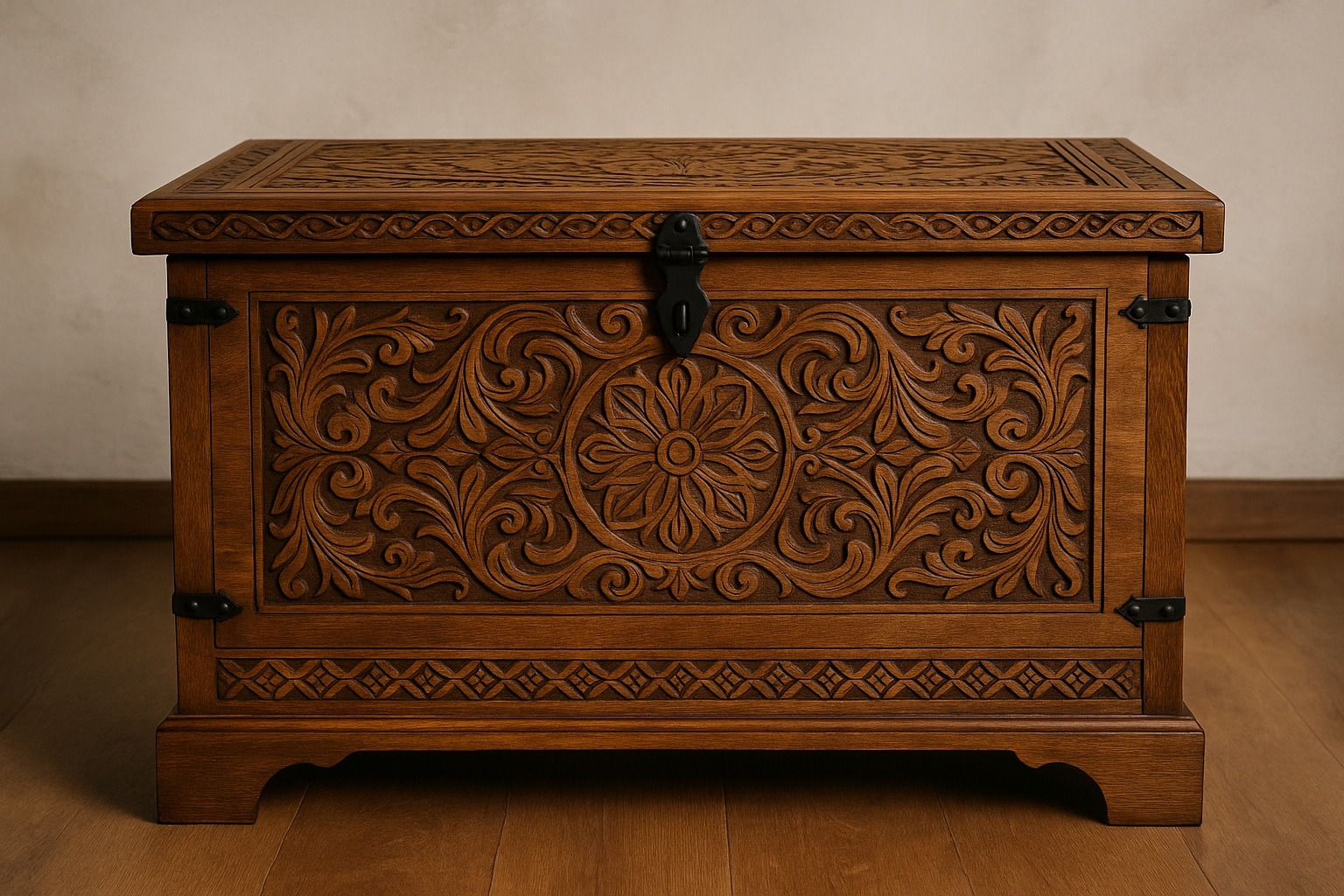
The Blerim Chest is one of the craft items that best reflects Albania’s traditional woodwork. These chests are usually made from local wood and handcrafted by artisans. Their designs often feature patterns, motifs, and symbols unique to Albanian culture. The surface of the chest is either intricately carved or painted, making each one a true work of art. The Albanian people commonly use these chests to store valuable items, but they also play an important role in daily life. Each Blerim Chest symbolizes Albania’s deep-rooted craft tradition and family culture.
Blerim Chests are more than just functional items; they are cultural symbols that carry the history and traditions of the Albanian people. Passed down through generations for centuries, these chests have become an integral part of Albanian family life. With their rich details and aesthetic appearance, they offer a valuable gift option for those visiting Albania. Today, many artisans still produce Blerim Chests using traditional methods, keeping this cultural heritage alive. With both practical and decorative features, these chests make an excellent gift for those who appreciate Albanian culture and traditional crafts.
3. Albanian Wines: Wines produced from local vineyards.

Albania has a long-standing tradition in wine production, and the region has historically possessed highly fertile lands for viticulture. Wines produced from local grapes in different regions of the country hold an important place in the culture of the Albanian people. One of the most well-known local grape varieties in Albania is Vlosh and Shesh i Bardhë, which form the foundation of the country’s wine production. These grape varieties give the wines a unique flavor and aromatic character. Wines produced in Albania are processed not only through traditional methods but also with modern techniques, and they are increasingly appreciated worldwide.
Albanian wines stand out particularly for their natural and organic qualities, especially those made from local vineyards. The country has historically been home to many ancient grape varieties, most of which have been preserved through centuries of winemaking tradition. Albanian wines are often enriched with fruity and floral notes and pair excellently with local dishes. In Albania, especially during the summer months, tours are organized offering wine tastings and vineyard visits. These wines are an integral part of both traditional and modern Albanian cuisine and offer visitors a unique opportunity to experience the cultural richness of Albania.
4. Glenza: Albanian traditional handwoven carpets.
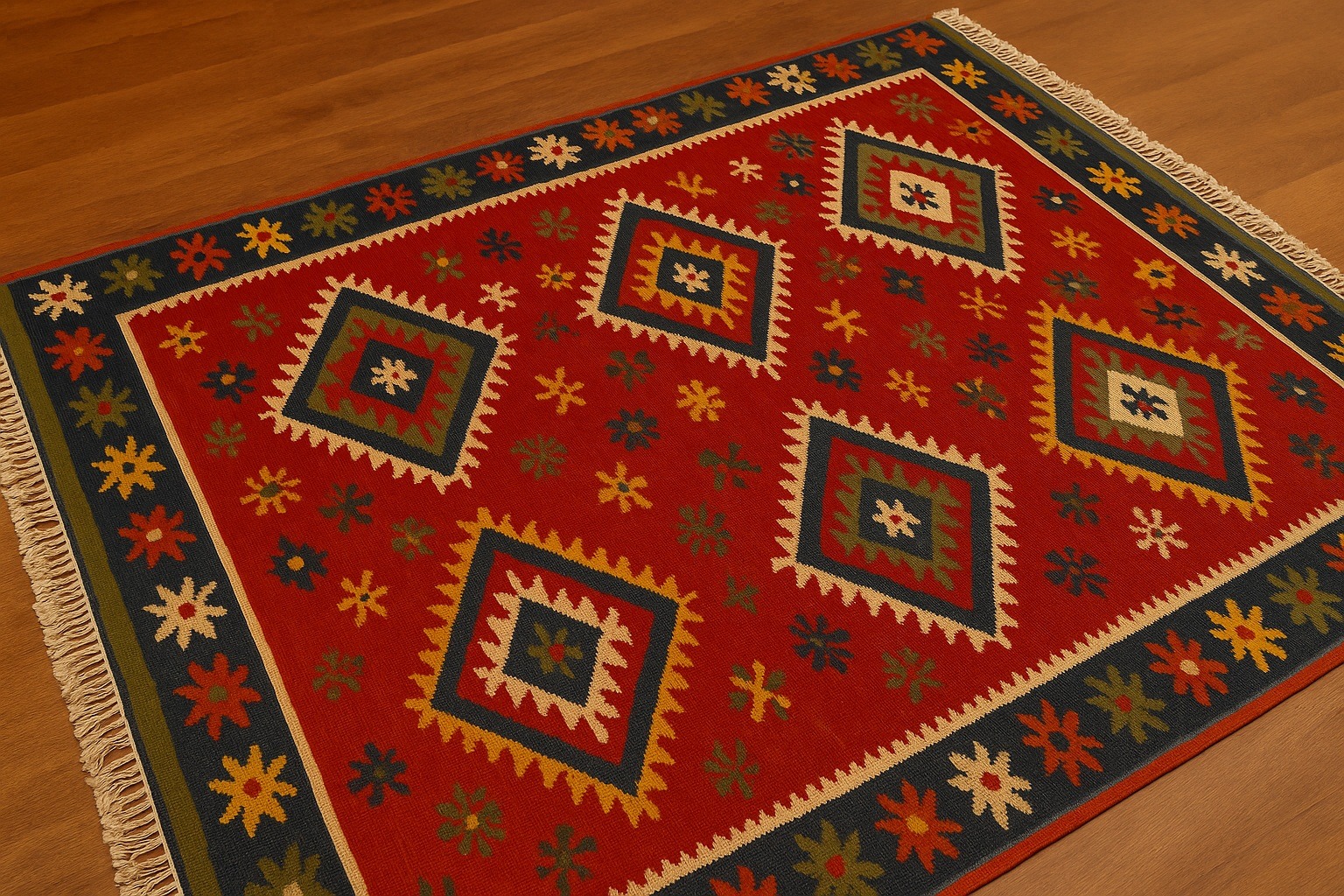
Glenza is one of the most famous and traditional types of handwoven carpets in Albania. These carpets are predominantly produced in the southern regions of the country and are notable for their craftsmanship. Each Glenza is meticulously woven by local women artisans through a long and careful process. The patterns used in the weaving feature symbols, geometric shapes, and natural motifs unique to Albanian culture. These carpets carry deep meanings related to the history, traditions, and lifestyle of the Albanian people. Glenza is not just a decorative item but also a valuable family heirloom.
Glenza carpets are woven using natural threads and are typically adorned with vibrant colors such as deep red, green, blue, and yellow. The patterns on the carpets are enriched with motifs that reflect the cultural differences and history of each region. These carpets hold an important place in the decoration of Albanian homes and are often given as gifts. Glenza is a significant symbol of Albanian handicrafts, and the carpets produced by local artisans are gaining interest worldwide, being regarded as valuable gifts that represent Albanian culture.
5. Albanian Jewelry: Traditional jewelry made of silver.
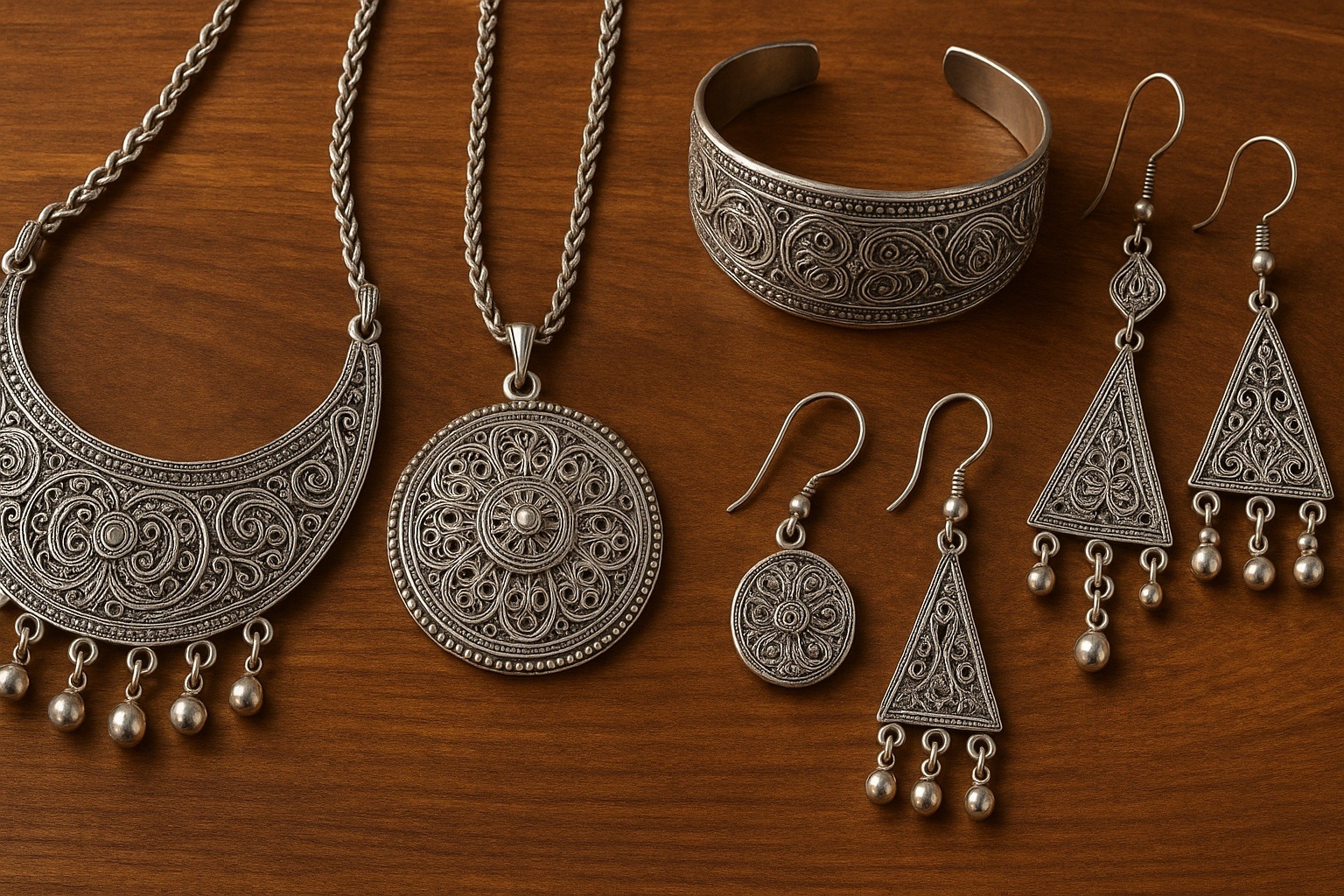
Albanian jewelry is an important part of the country’s rich cultural heritage, with traditional silver pieces holding significant value. These items reflect the history, traditions, and social structure of the Albanian people. Silver has been used in jewelry-making in Albania since ancient times and features original designs that vary by region. Traditional Albanian jewelry is usually handcrafted and includes symbols and motifs that carry special meanings. Necklaces, bracelets, rings, and earrings are often worn as part of women’s traditional clothing and are also given as gifts on special occasions, weddings, or religious holidays.
The patterns in Albanian jewelry are shaped by regional differences and cultural heritage. Some pieces are adorned with motifs inspired by nature and daily life, while others feature finely crafted geometric designs. Albanian jewelry is typically created through traditional silver craftsmanship and decorated with intricate details. These pieces not only offer visual appeal but also symbolize the identity, traditions, and history of the Albanian people. Even today, these jewelry pieces are made by local artisans and play a vital role in preserving traditional crafts and cultural heritage in the modern world.
6. Mangal: Traditional Albanian brazier, especially suitable for outdoor use.
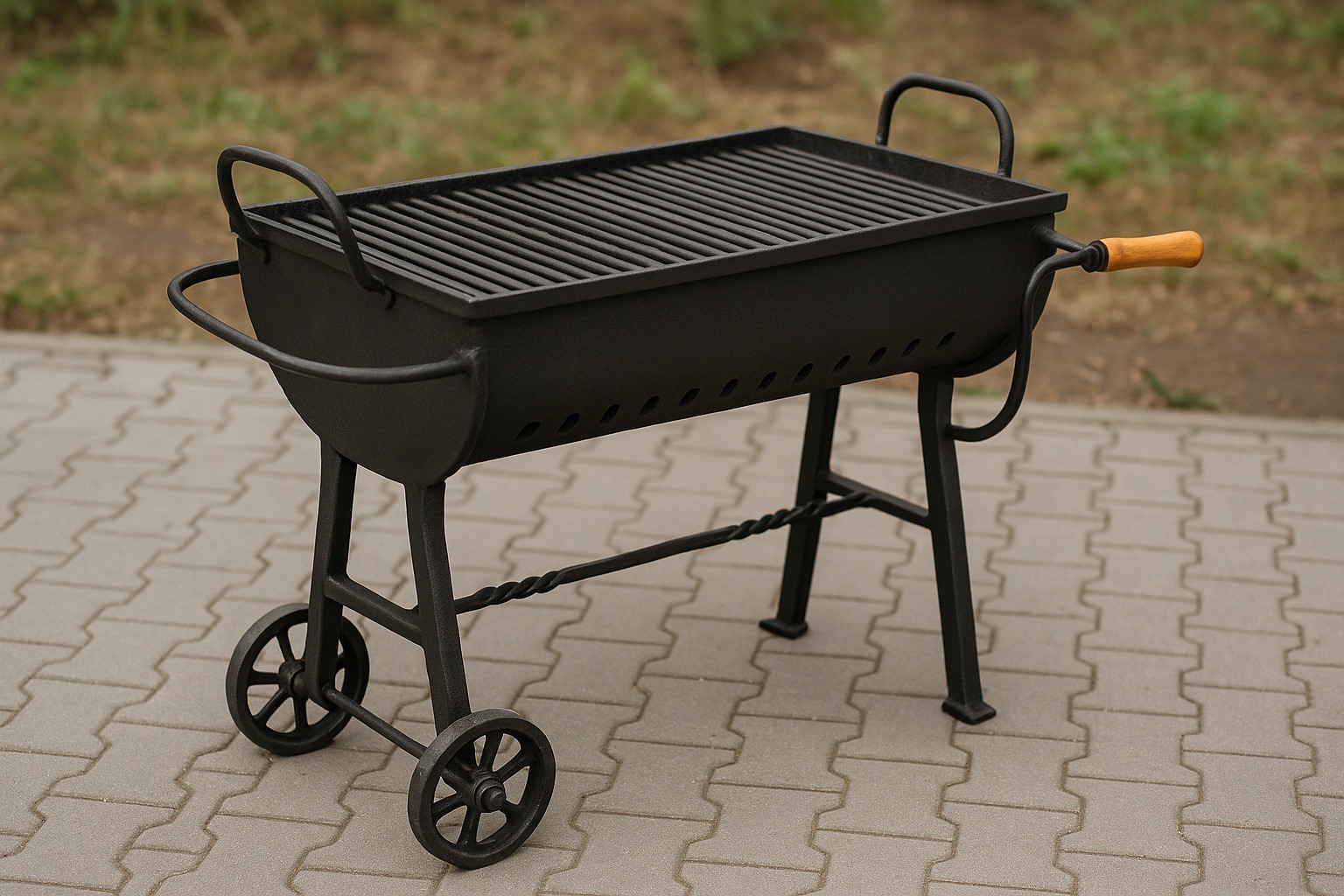
The traditional Albanian brazier is an important part of Albanian culture and is commonly used during outdoor activities. These braziers have long been a tool through which the local people cook meals and socialize with family and friends, gaining deep cultural significance. Albanian braziers are usually made from durable metal materials and are designed to be multifunctional. Especially ideal for open-air meals and celebrations, these braziers are used to cook meats, vegetables, and traditional Albanian dishes. Their most notable feature is their large grill surface and adjustable heating systems, which allow food to be cooked perfectly.
The Albanian brazier traditionally has a portable structure, making it well-suited for outdoor events. They are often available in portable wheeled models or fixed structures, and their design is optimized to facilitate the cooking process. These braziers are excellent tools for preparing kebabs and other meat dishes, which have an important place in Albanian cuisine. Frequently used during picnics, family gatherings, and celebrations in Albania, these braziers play a key role in both cooking and social interaction. Therefore, the traditional Albanian brazier carries both functional and cultural significance.
7. Handmade Ceramics: Ceramic vases, plates, and decorative items made in local workshops.
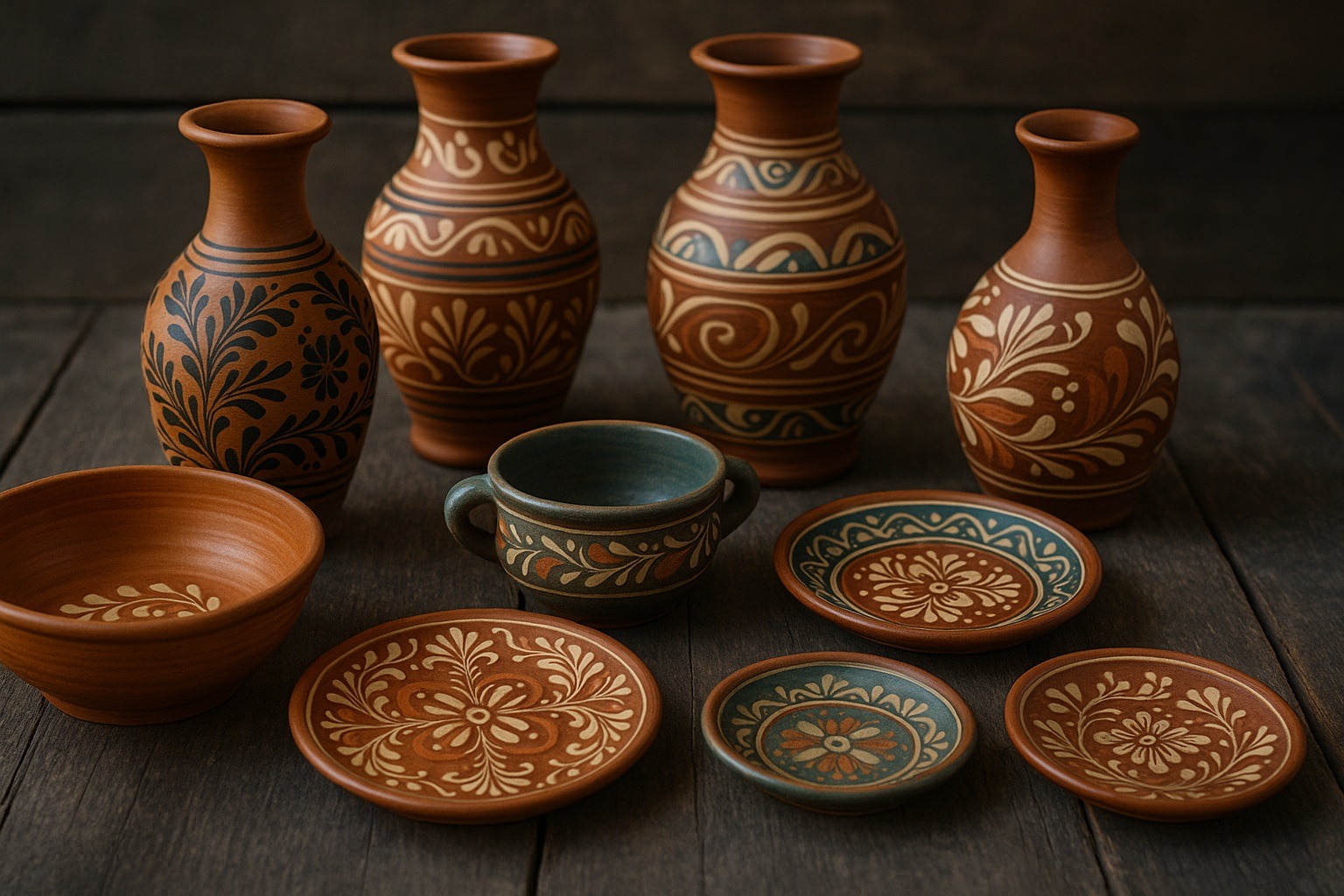
In Albania, ceramics are a traditional handicraft passed down from generation to generation by local artisans. These ceramics are typically made in local workshops from clay derived from natural materials, and each piece reflects the individual skills and cultural heritage of its makers. Albanian ceramics are mostly shaped by hand and fired using traditional methods. Among the ceramic items are vases, plates, pots, decorative objects, and various figures. Colorful patterns, traditional Albanian motifs, and natural figures are commonly applied to these ceramics. These designs represent the lifestyle, love of nature, and cultural symbols of the local people.
Ceramics that can be bought from Albania are not only aesthetically pleasing but also functional. Plates, vases, and decorative items hold an important place in the decoration of Albanian homes. These handmade ceramics reflect the richness and history of Albanian culture. They also offer meaningful souvenirs unique to Albania for tourists. These ceramics help preserve Albania’s traditional crafts and serve as valuable mementos for those who appreciate the works of local artists.
8. Aluminum Shirts: Unique, handmade traditional Albanian shirts made from aluminum fabrics.
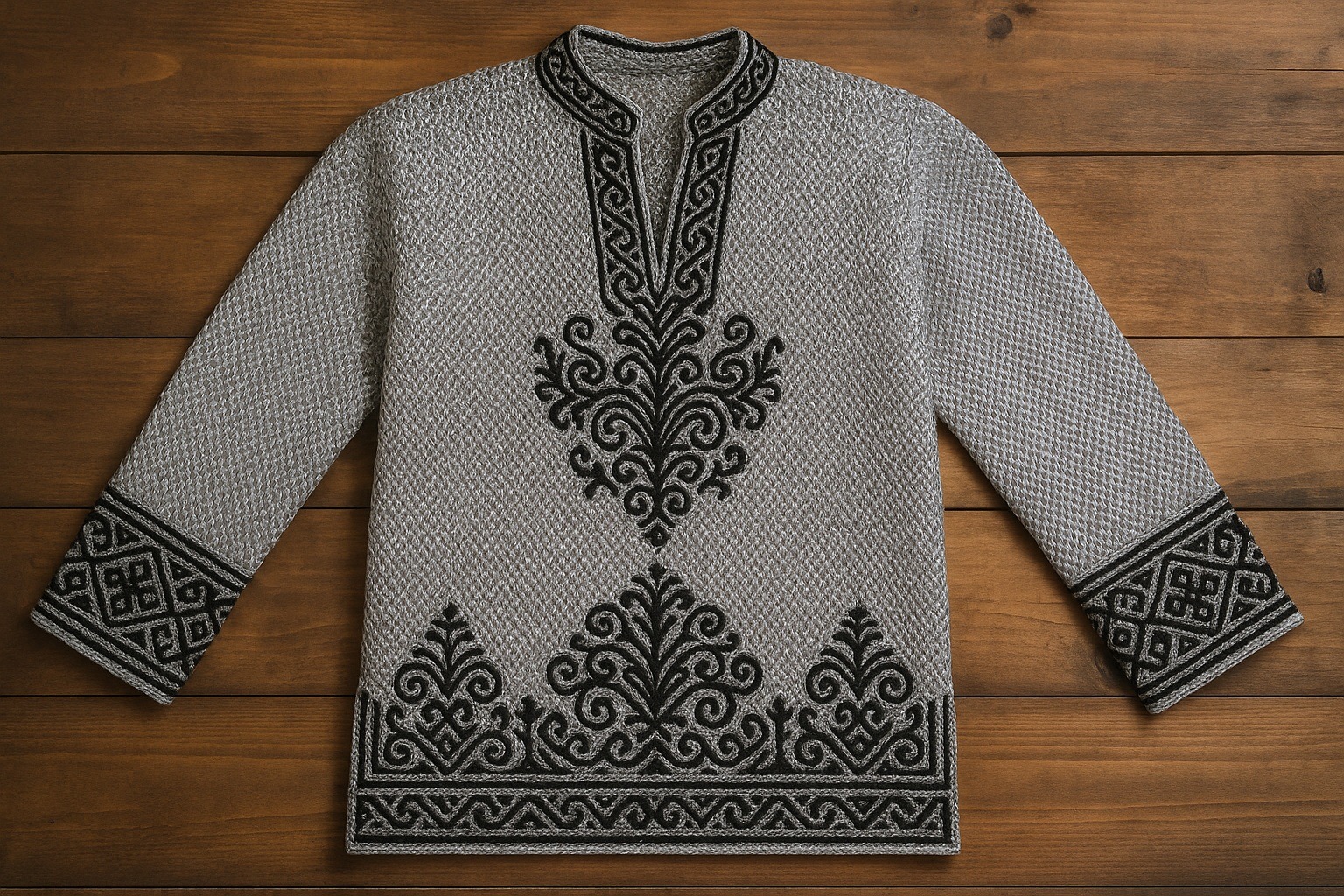
Aluminum shirts are an important part of Albania’s traditional clothing culture, and these special garments are made from unique, handmade aluminum fabrics. These shirts are traditionally worn especially in rural regions of Albania and hold great significance as cultural heritage. Aluminum fabrics are created by weaving fine metal threads with meticulous craftsmanship, giving the shirts both an aesthetic shine and durability. Their designs often feature traditional Albanian motifs, crafted by hand and typically adorned with intricate geometric shapes.
These traditional shirts are not only functional but also considered symbols of Albanian culture. Though this tradition has gradually declined over time, it is still kept alive today by local artisans. Aluminum shirts are typically worn at weddings and special celebrations, and their production requires a high level of expertise. Each shirt carries both cultural and artistic value, making them meaningful gifts for both the Albanian people and tourists.
9. Chicken Pillows: Handmade pillows, often featuring traditional motifs.

Chicken pillows are one of Albania’s traditional handicrafts and are typically handmade. These pillows are decorated with traditional Albanian motifs and are usually made from natural fabrics such as cotton and wool. The patterns on the pillows reflect the culture and lifestyle of the Albanian people. Common designs include nature-inspired flowers, geometric shapes, and animal figures. These pillows hold both decorative and functional value in Albanian homes. They are also frequently given as gifts, as they symbolize respect for Albania’s cultural values.
Chicken pillows stand out for both their elegance and traditional significance. In Albania, such pillows are especially used in traditional authentic homes to reflect an authentic atmosphere. Each pillow is carefully crafted by artisans and may carry features specific to a particular family or region. Over time, these handmade pillows have become more than just decorative items; they have formed a cultural connection, becoming important elements that reflect the history and traditions of families.
10. Raki: The traditional alcoholic drink of Albanians.

Raki is one of Albania’s traditional alcoholic beverages and holds an important place in the country’s social life. Albanian raki is a distilled drink made especially from grapes and various fruits. With a high alcohol content, this drink is usually served cold and consumed during social gatherings alongside meals. As a part of Albanian culture, raki is especially enjoyed on special occasions, celebrations, and family gatherings. Grape raki is a drink with historical roots for Albanians, generally produced from local vineyards using traditional methods.
Albanian raki has a rich aroma and is often served flavored with fresh fruit or mint. Its high alcohol content makes it not just a drink but also an integral part of Albanian cuisine. Raki is a symbol of Albanian social life and hospitality, enjoyed in the company of family and friends. Although it is the most preferred drink in Albania, it may be prepared with different recipes and flavors in various regions. In Albanian culture, raki is not just a beverage but also a tradition symbolizing unity and togetherness.
11. Albanian Clothing: Traditional regional clothing and accessories.
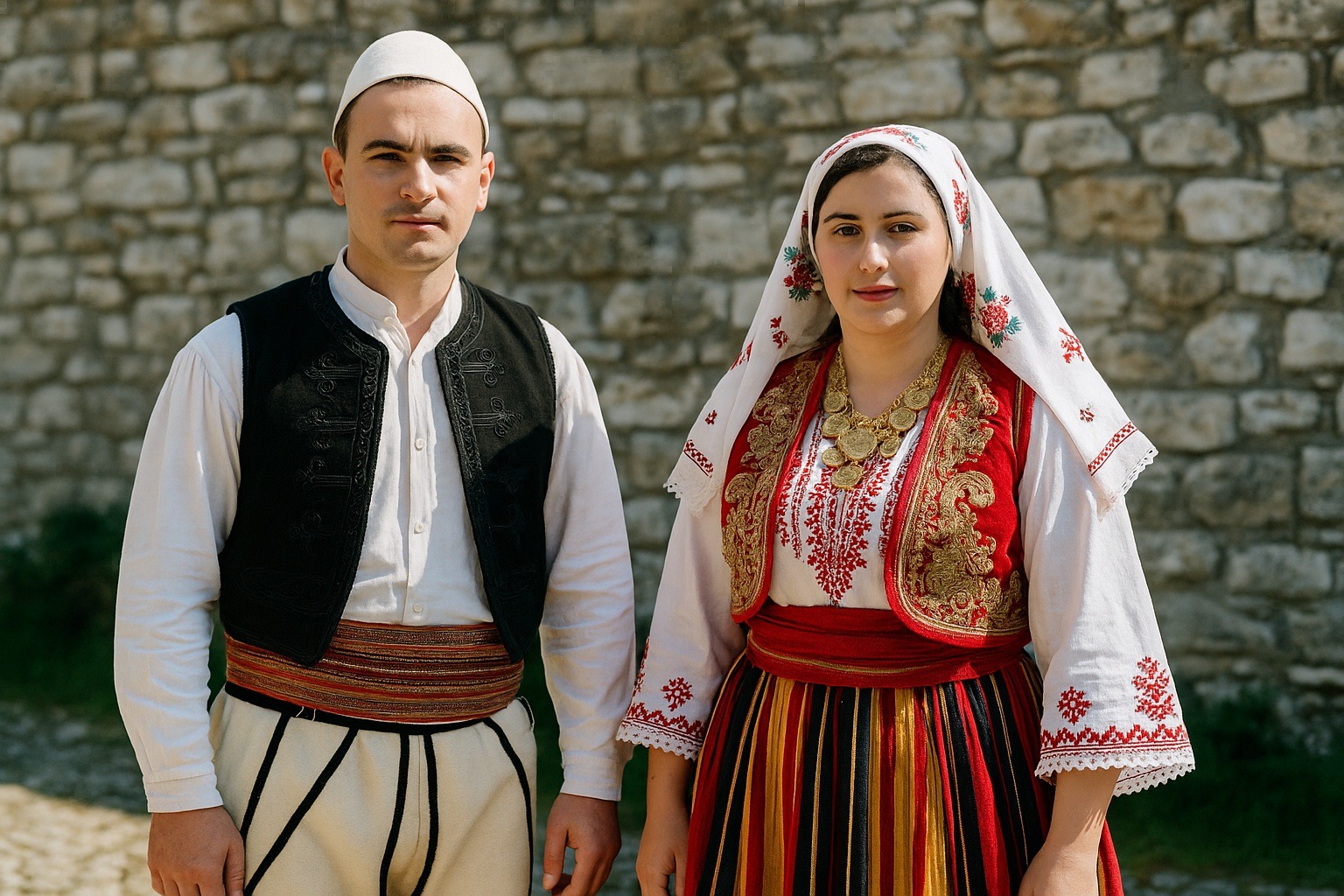
Albanian clothing is an important element that reflects the country’s rich cultural heritage and traditional lifestyle. In different regions of Albania, each village has its own distinctive clothing and accessories. These garments, often made from natural materials such as wool, are worn both in daily life and on special occasions. Traditional clothing for men includes elements such as trousers, shirts, vests, and headwear, while women’s attire features embroidered dresses, skirts, headscarves, and jewelry. One of the most striking features of Albanian clothing is the traditional embroidery, crafted with vibrant colors and fine workmanship.
Traditional Albanian clothing carries cultural symbols, and the motifs used in their designs reflect regional differences. In particular, women’s headscarves and jewelry symbolize Albania’s historical and cultural identity. The motifs in the designs typically include natural elements, geometric patterns, and local symbols. These clothes are especially worn during weddings, religious holidays, and other special events. Although traditional Albanian clothing has become less common in the modern world over time, it still plays a significant role in cultural events and festivals. Albanian garments are also regarded as works of art, crafted with great care by traditional artisans.
12. Handmade Leather Bags: Leather bags made with traditional Albanian craftsmanship.
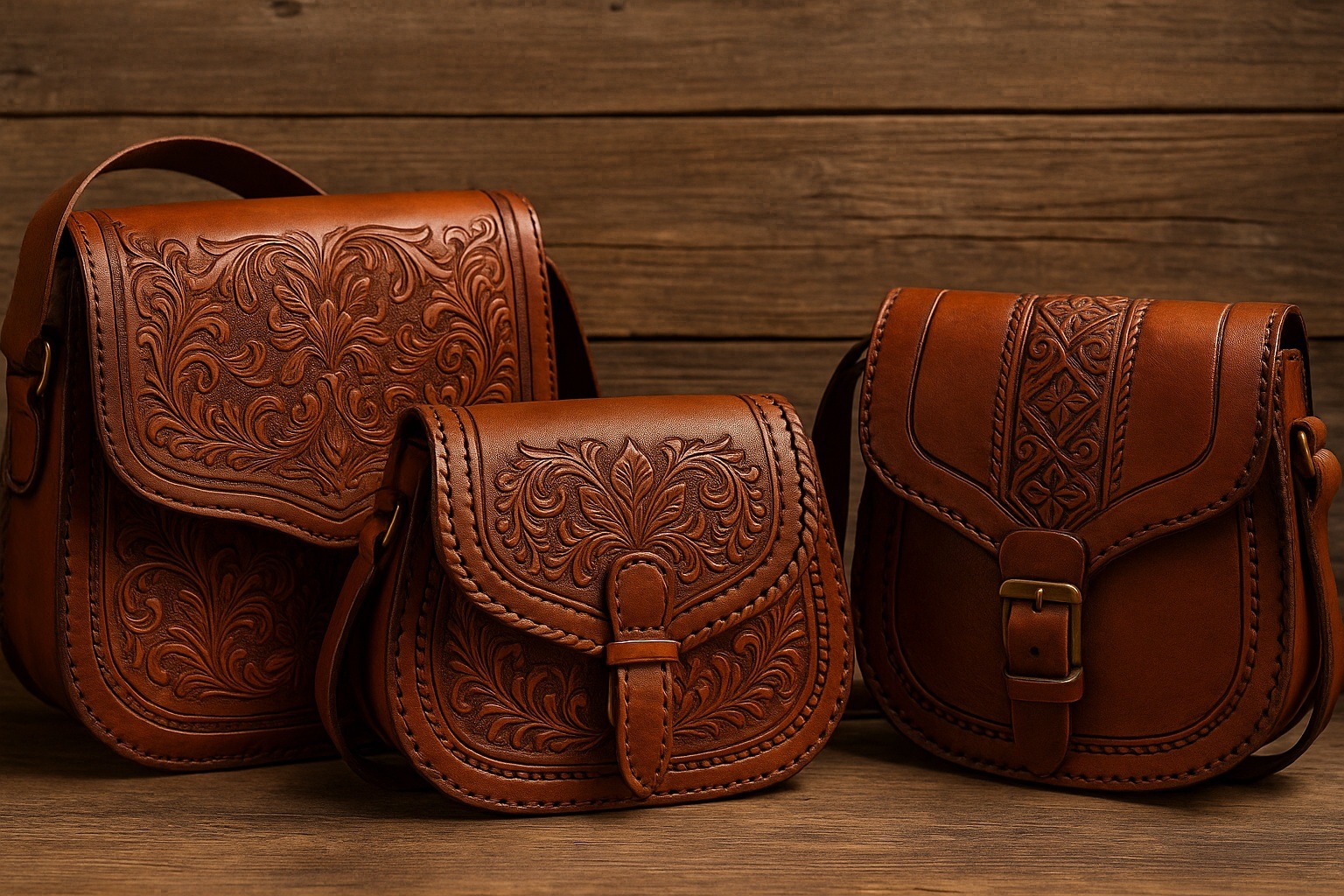
Handmade leather bags are an important part of Albania’s traditional craftsmanship. These bags are carefully made by local artisans and designed using high-quality leather. Traditional Albanian leatherwork is shaped by the artisans’ manual skills, and each bag stands out with its customized designs and durable structure. The leather bags often feature patterns, motifs, or embroidery related to Albanian culture. This craft is still actively practiced in rural areas of Albania, keeping age-old traditions alive. The leather used in the designs is typically strong and high-quality, developing an aesthetic patina over time.
Albanian leather bags are not only functional but also hold significant aesthetic value. They are suitable for both everyday use and special occasions. The bags, while staying true to Albanian traditions, combine modern and traditional styles. Each leather bag is of high value in terms of both quality and uniqueness. These bags, handcrafted by artisans, are meaningful souvenirs symbolizing Albanian culture. For tourists and collectors, they are among the most meaningful and valuable gifts that can be brought from Albania.
13. Marbled Fabrics: Albanian traditional fabrics decorated with marbled patterns.
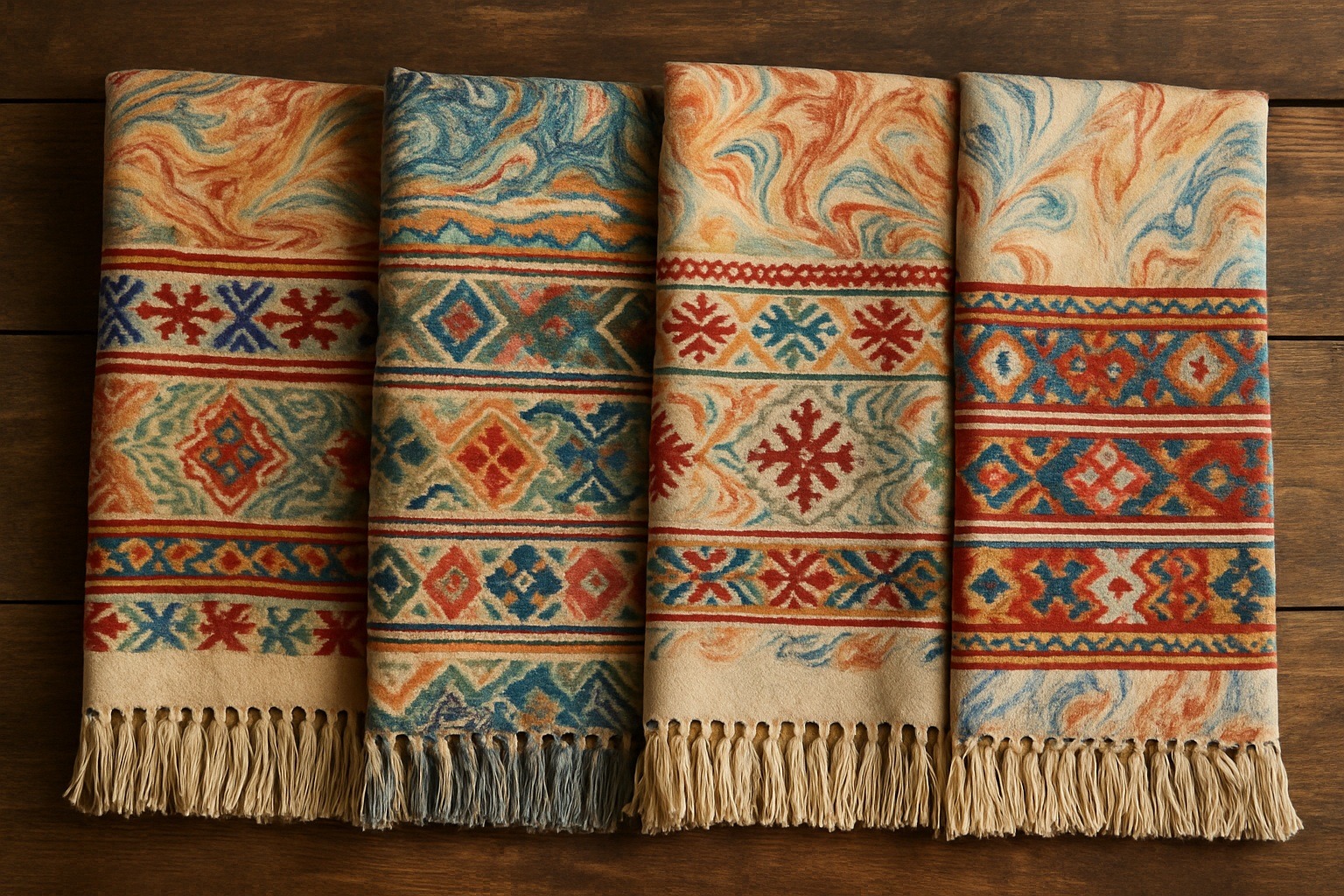
Marbled fabrics are an important part of Albania’s traditional textile art, and these fabrics are used for both functional and decorative purposes with their unique patterns. Marbled designs are especially featured on handwoven textiles and are known for their distinctive shapes formed by the blending of various colors. Albanian artisans craft these patterns using traditional methods, creating a unique style in each piece. Marbled fabrics are commonly used to make carpets, curtains, tablecloths, and various garments. The weaving process is quite labor-intensive, as it involves combining many colorful threads, which ensures that each piece is one of a kind.
Traditional Albanian marbled fabrics hold not only aesthetic but also cultural value. These fabrics are adorned with symbols reflecting the historical roots and lifestyle of the Albanian people, with each motif carrying a specific meaning. Designs often include nature-inspired figures, geometric shapes, and elements symbolizing life. Marbled fabrics are produced in different styles across various regions of Albania, and each region has its own distinctive marbled patterns. These textiles are regarded as valuable souvenirs by both the Albanian people and visitors and contribute to the preservation of Albanian culture.
14. Decorative Items: Handmade traditional Albanian ornaments and figurines.
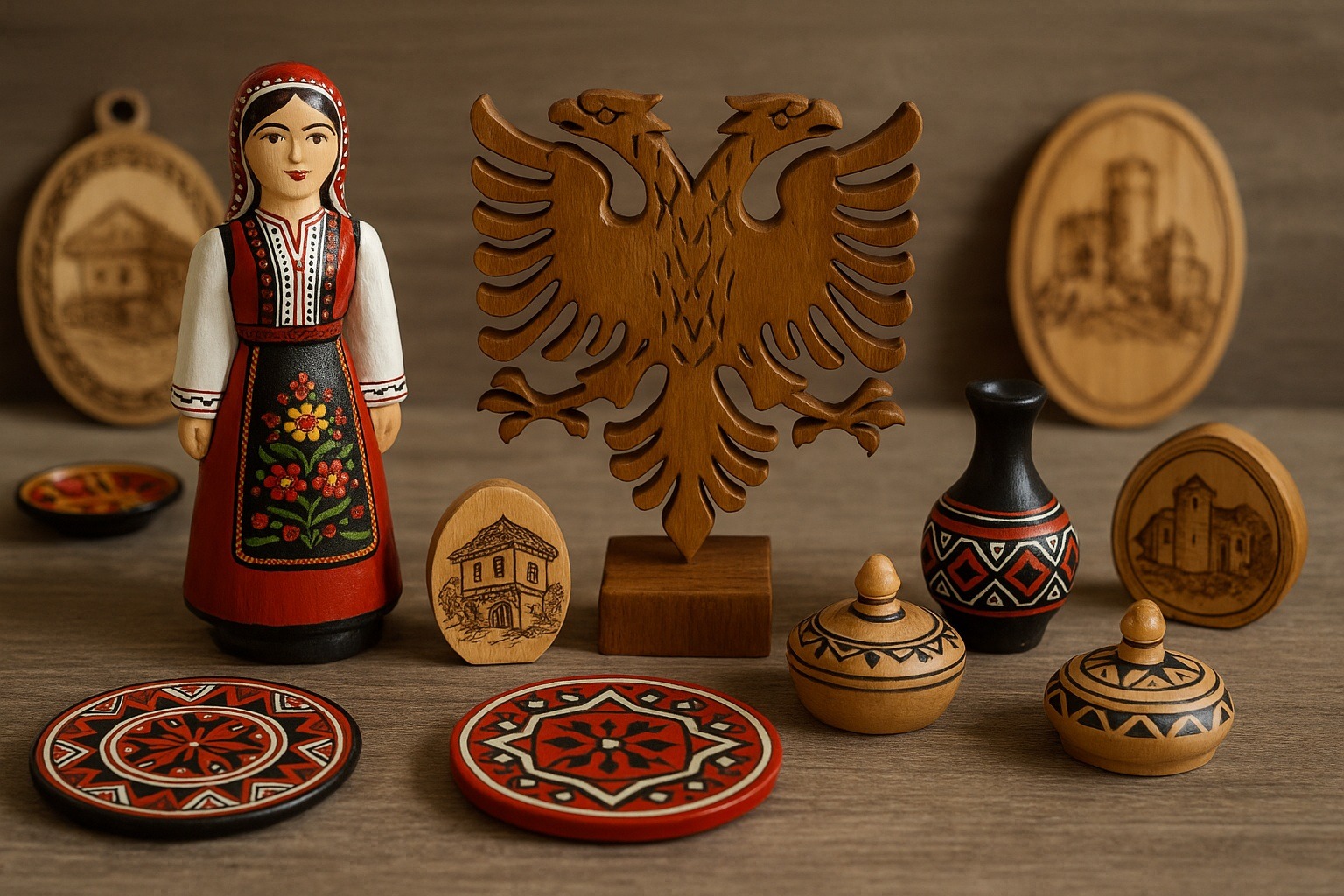
Albania’s traditional handmade decorative items are significant pieces that reflect the region’s cultural heritage and aesthetic sensibility. These ornaments are typically made from local materials such as wood, metal, and ceramics, and each one showcases the craftsmanship of artisans. Common figures in Albanian decorative items include traditional motifs and elements inspired by nature. Especially handmade sculptures, miniature figurines, and decorative vessels hold an important place in the decoration of Albanian homes. These items carry cultural significance as well as great aesthetic value.
Handmade decorative items from Albania are more than just decorative pieces; each tells a story and reflects the lifestyle, traditions, and beliefs of the Albanian people. The motifs used in the designs often include symbols related to family and nature. In Albanian homes, these decorative objects are seen as symbols of hospitality and family bonds. Additionally, these uniquely Albanian ornaments are highly popular as meaningful souvenirs for tourists. Handmade traditional decorative items offer a unique option for those who want to learn about Albanian culture and take home a cultural keepsake.
15. Walnut Cookies: Flavors unique to Albanian cuisine.
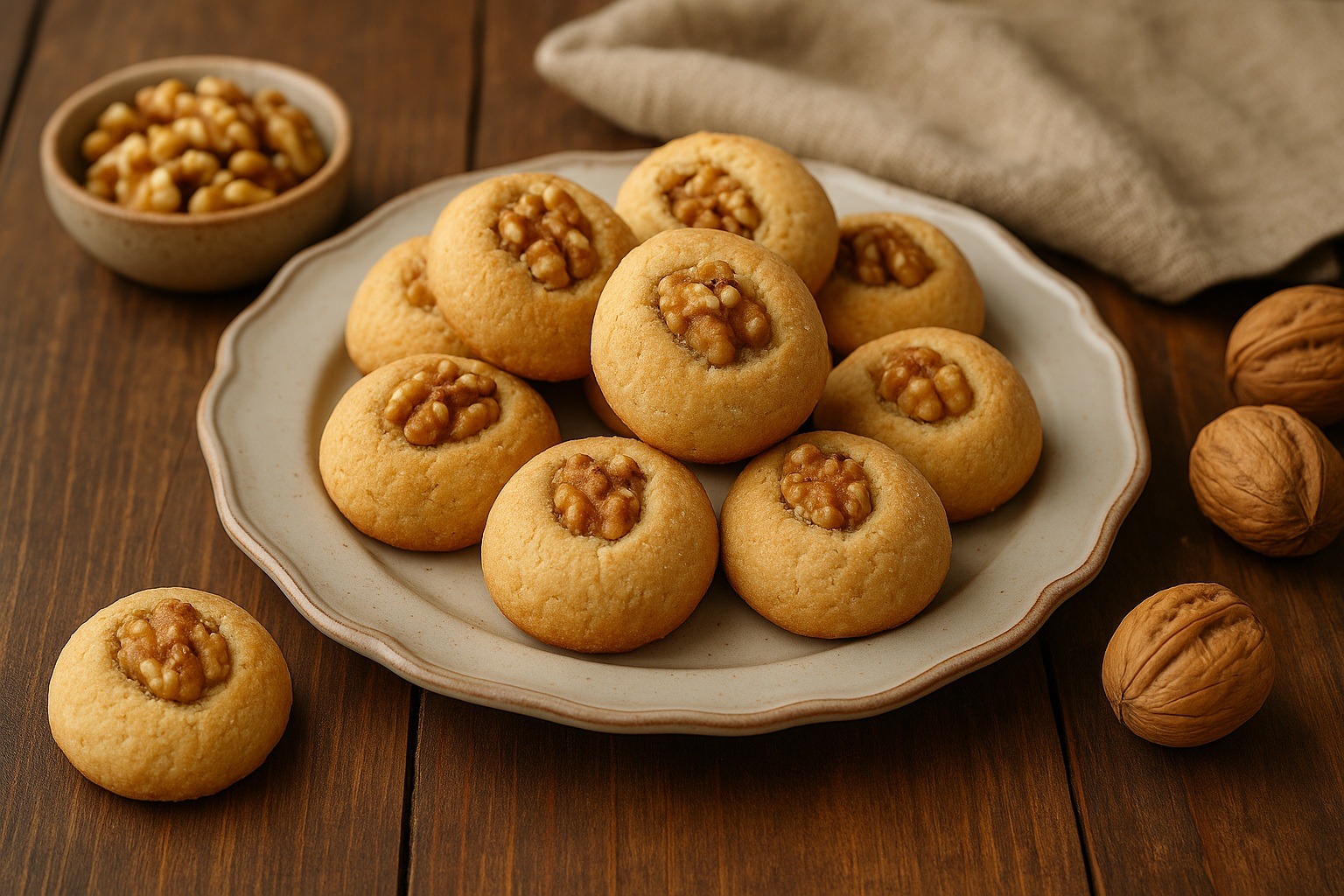
Walnut cookies are one of the most beloved desserts in Albanian cuisine and are especially consumed during special occasions, holidays, and family gatherings. These cookies are made by blending the rich aroma and soft texture of walnuts into a sweet and slightly crispy structure. As a part of traditional Albanian desserts, walnut cookies are usually prepared with natural and local ingredients. The dough typically includes flour, butter, sugar, and walnuts—simple yet high-quality ingredients that give the cookies both a rich flavor and a pleasant touch. Walnut cookies also pair perfectly with Albanian tea or coffee, which is why they are often served with a drink.
Compared to other sweets in Albanian cuisine, walnut cookies have a rather simple and natural taste, but the intense flavor of the walnuts makes them special. Traditionally, these cookies are shaped by hand and sometimes dusted with powdered sugar or lightly sweetened with syrup. Over time, their popularity has grown, and this dessert has become well-known and loved not only in Albania but also across the Balkans. These unique Albanian flavors are considered a cultural heritage when served to guests and are an integral part of a traditional Albanian table.
16. Albanian Wool: Textile products made with wool handicraft.
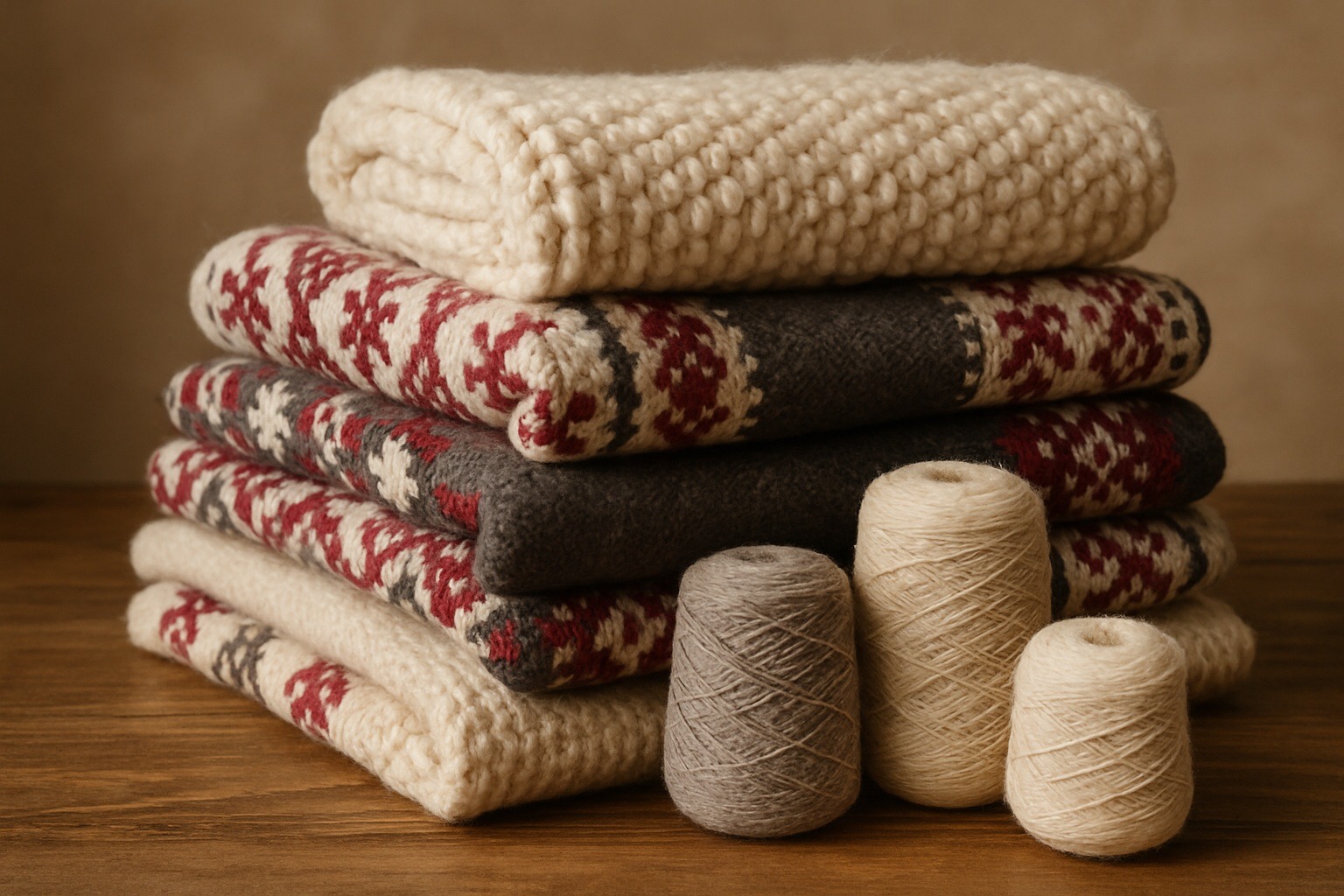
Albanian wool is a traditional craft that has been used for centuries in the production of Albanian textile products. This wool refers to fabrics woven with natural threads made especially from sheep’s wool and is still produced using traditional methods in the rural regions of Albania. Albanian wool is known for its dense texture and durability, as well as its excellent heat-retaining properties. The wool is first processed by hand and then spun into yarn. These yarns are typically woven on handlooms to create traditional items such as rugs, kilims, blankets, and clothing. Textile products made from Albanian wool are not only aesthetically valuable but also functional and environmentally friendly.
Albanian wool also reflects regional culture, as different patterns and techniques are used in various areas. Rugs and kilims are among the most well-known products made with Albanian wool and often feature geometric designs, elements of nature, and traditional Albanian motifs. Products made from Albanian wool stand out with their rich color palettes and patterns, making them ideal for both home decoration and traditional clothing. Today, these traditional textile arts continue to be preserved by local artisans and are considered among the most authentic souvenirs one can buy from Albania.
17. Local Olive Oil: Albania’s renowned olive oils.

Albania, influenced by the Mediterranean climate, is a country where olive cultivation is widespread, and local olive oils hold an important place in its cuisine. Olive oils produced from olives grown in different regions of Albania are known for their high quality and unique flavors. Particularly in the southern regions, olive groves offer ideal conditions for olive oil production. Albanian olive oil is especially noted for its organically produced varieties. These oils have low acidity and reflect the fresh and pure aroma of the olive. Olive oil production in Albania is carried out using traditional methods, which have been preserved over time and combined with modern techniques.
Albanian olive oils are used not only in cooking but also in health and cosmetic fields. The health benefits of olive oil, especially its positive effects on heart health and the digestive system, are well known. These oils are usually sold bottled and are found especially in local markets and boutique shops. The unique taste of olive oil has become a fundamental element of Albanian cuisine. It is used in the preparation of many dishes, from salads to fried foods. Local olive oil is also one of the most authentic and healthy gifts that can be brought from Albania.
18. Spoons and Pots: Traditional wooden or stone spoons and pots.
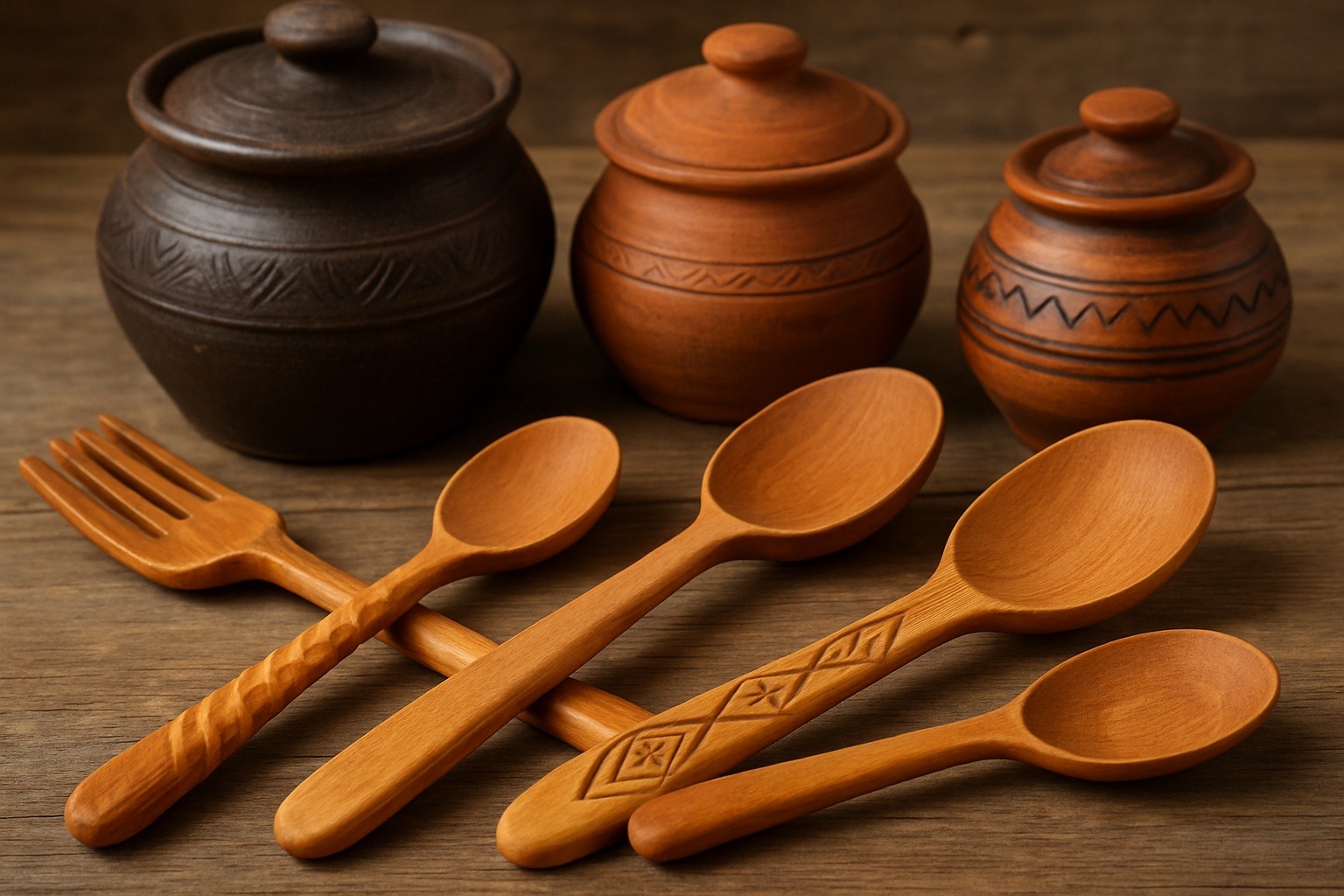
Spoons and pots hold an important place among Albania’s traditional handicrafts and are especially used in the daily lives of the local people. Traditional Albanian spoons are typically made from natural materials such as wood or stone. Wooden spoons are known for being durable and lightweight and are sometimes detailed with fine craftsmanship. Stone spoons, on the other hand, are preferred for cooking heavier meals and play an important role in Albanian cuisine. These spoons carry great value both for their practical use and aesthetic appeal. In Albania, traditional spoons are usually carved from wood and can be decorated with unique patterns that reflect the artisan’s skill.
Pots are another historical craft in Albania and are generally made from clay or ceramic materials. These pots serve both functional purposes, such as cooking and storage, and decorative ones. Traditional Albanian pots are adorned with colorful patterns, geometric shapes, and nature-inspired figures, with each design varying regionally. Pots hold a significant place in the decoration of Albanian homes and are commonly sold in local markets. These pots are valuable handicrafts that preserve the cultural heritage of the Albanian people, appreciated for both their functionality and aesthetic beauty.
19. Albanian Mantar: Handmade traditional kitchen utensils.

Albanian mantars are indispensable items of traditional Albanian kitchen culture and are typically made from wood or stone materials. These tools are used during the cooking process in Albanian cuisine, primarily for stirring food, mixing sauces, and assisting in the preparation of meats. They play an important role, especially in dishes cooked over traditional stone hearths or open flames. Mantars are highly valued for both their functionality and aesthetics; they are among the most frequently used traditional cooking tools in Albanian kitchens. Additionally, their construction from natural materials makes them eco-friendly and durable.
Albanian mantars are handmade by local artisans, and each one is unique with its own special design. These tools can be crafted in various sizes and shapes, and they represent key symbols of Albania’s culinary culture. The use of wood and stone materials reflects traditional Albanian craftsmanship and the efficient use of natural resources. Mantars are used both for daily cooking and decorative purposes, embodying the warmth and authenticity of the Albanian kitchen when presented to guests. These mantars are considered valuable souvenirs for those looking for traditional kitchenware unique to Albania.
20. Olive Soaps: Natural soaps made from Albania’s olives.
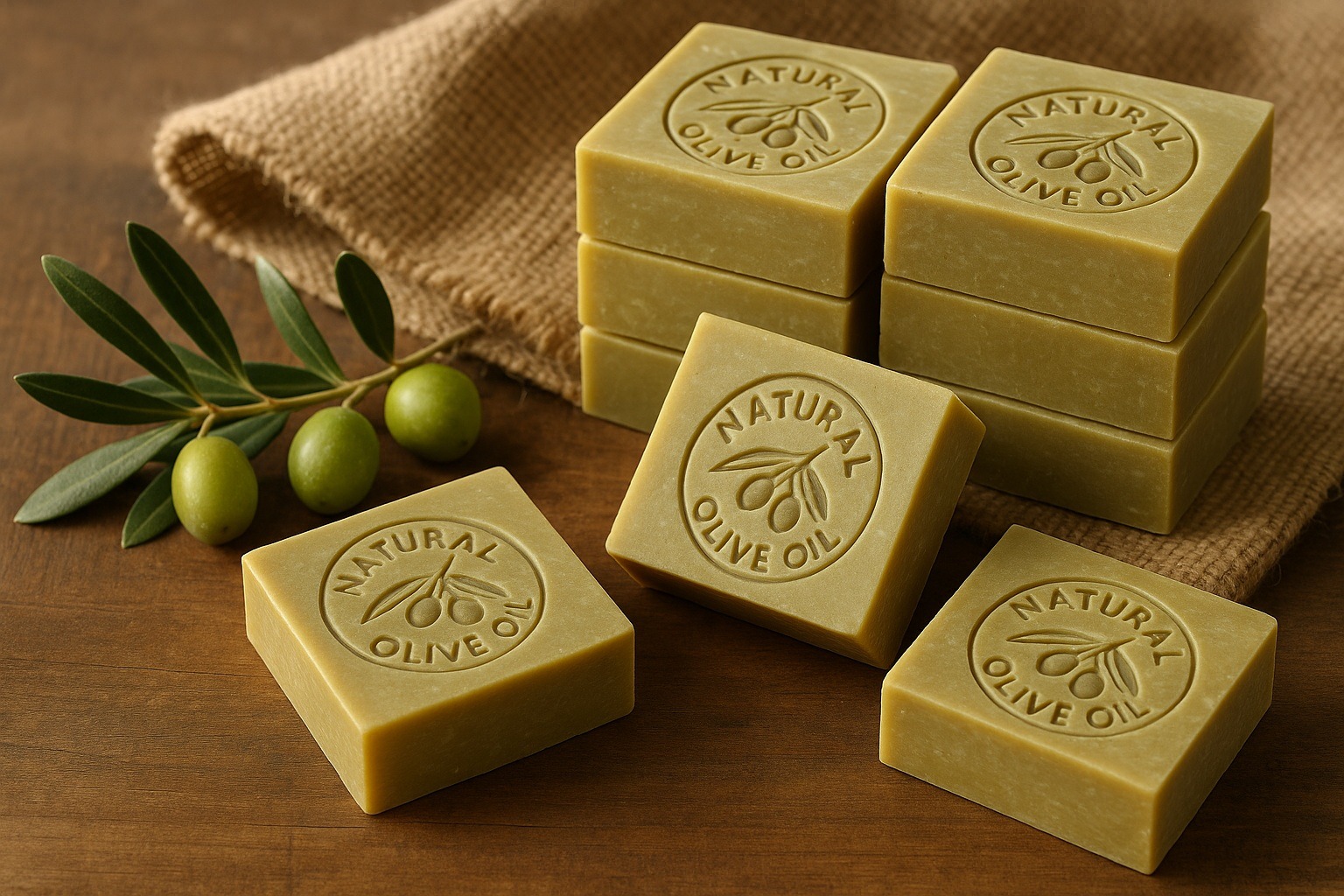
Albania holds an important place in olive production, and the natural soaps made from these olives are among the country’s traditional handicrafts. Olive soaps have become one of Albania’s most popular handmade products, especially in today’s world where demand for organic and natural items is increasing. The vitamins and antioxidants in olive oil are highly beneficial for the skin when used in soap production. Olive soaps help maintain the skin’s moisture balance and soften dry skin. They also nourish the skin and provide a natural glow, making them one of the most valuable souvenirs to bring from Albania.
In Albania, olive soaps are produced using traditional methods. Olive oil is one of the key ingredients in soap-making, and the soaps are usually prepared by hand. Olive oil gives the soaps both a natural shine and intense moisturizing properties. Moreover, since these soaps are made with natural ingredients, they are skin-friendly and an excellent option for those who want to avoid chemical substances. Olive soaps are sold in local markets and boutique shops throughout Albania and are highly appreciated as symbols of the country’s traditional cuisine and craftsmanship. Being both healthy and culturally rich, these soaps are a valuable gift option for both the Albanian people and tourists.
21. Blue Yali Ceramics: Handmade items decorated with blue ceramic patterns.

Blue Yali ceramics are handmade ceramic-patterned items that hold an important place among Albania’s traditional crafts. These ceramics stand out with elegant designs, predominantly featuring blue and white colors. Blue Yali ceramics are known for finely crafted plates, vases, bowls, and various decorative objects adorned with nature-inspired motifs. The patterns often include geometric shapes, floral motifs, or natural figures. Blue ceramics reflect a traditional Albanian aesthetic and carry both functional and artistic value.
Blue Yali ceramics are produced in various regions of Albania, especially in cities like Elbasan, by traditional artisans. These ceramics hold great significance as products symbolizing local culture and the history of the Albanian people. The production of ceramics typically involves a long process and meticulous craftsmanship. Each piece is shaped by hand, making every ceramic item unique. Blue Yali ceramics are regarded as a part of Albania’s cultural heritage and are considered meaningful souvenirs by both locals and tourists. These ceramics play an important role in preserving traditional Albanian crafts and cultural legacy.
22. Natural Musk: Natural musk-scented products unique to Albania.
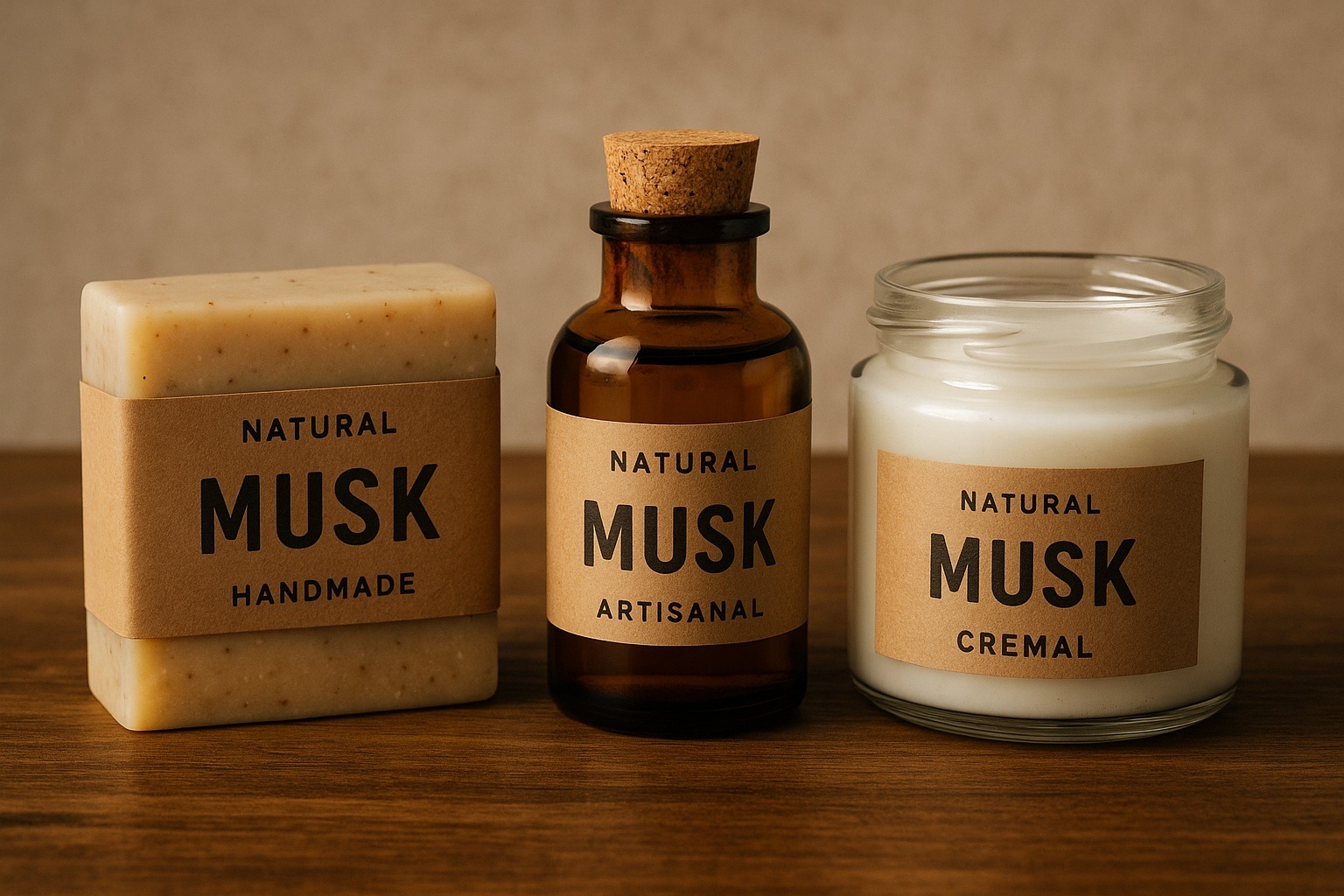
In Albania, natural musk holds an important place in both traditional and modern perfume industries. Musk plants that grow in Albania’s mountainous regions are known for their distinctive scents, and the natural musk obtained from these plants is commonly used in perfumes and cosmetic products. Musk is appreciated not only for its pleasant fragrance but also for its calming and relaxing properties. For centuries, the Albanian people have used natural musk in traditional health and care products, and this scent plays an important role especially in skincare and treatments aimed at improving mood. Musk is typically produced in villages surrounded by Albania’s natural beauty and is used in handmade perfumes and soaps.
Natural musk-scented products unique to Albania are meaningful gifts that reflect both Albanian culture and the region’s rich flora. Musk soaps, perfumes, and body lotions produced in Albania are generally made with entirely organic ingredients and are known as environmentally friendly products. The relaxing effect of musk makes it one of the healthiest and most natural souvenir options available from Albania. These scented products are produced using traditional methods and are offered to tourists to promote Albanian culture and support the local economy. Musk is a popular ingredient in both Albanian culture and the global market, and it stands among the natural products that symbolize Albania’s nature and rich heritage.
23. Handmade Wooden Furniture: Furniture made with traditional craftsmanship.
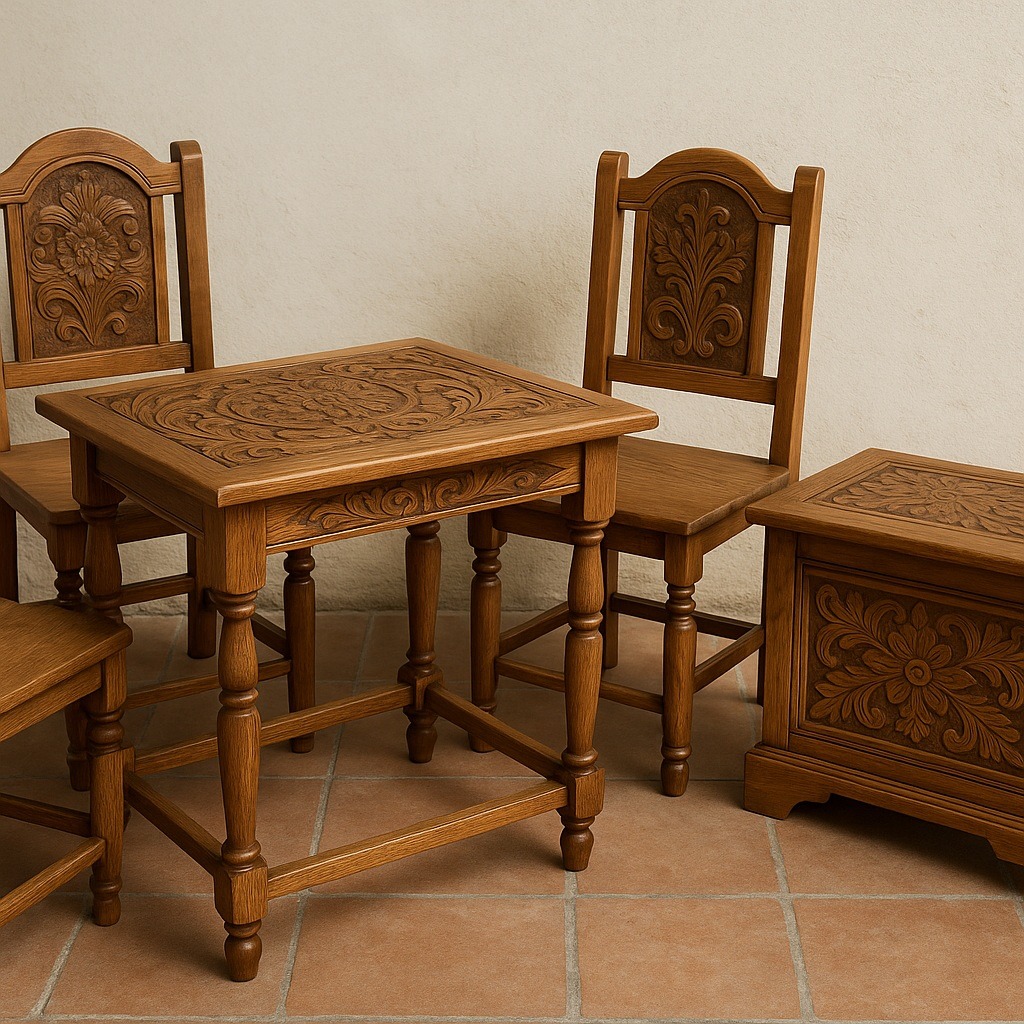
Handmade wooden furniture represents an important part of Albania’s craft tradition and is produced with great care by local artisans. These pieces are typically made from local wood and shaped using traditional woodworking techniques, resulting in unique designs. In various regions of Albania, each furniture item is connected to local culture and history. Woodworking is enriched with detailed carvings and patterns, making every piece one of a kind. Chairs, tables, cabinets, and bookshelves reflect the local lifestyle both aesthetically and functionally. Each item is created by blending traditional designs with modern needs.
Albanian handmade furniture stands out for its warm tones of natural wood and intricate craftsmanship. Made using traditional methods, this furniture not only enhances home decor but also serves as long-lasting, durable, and functional products. Artisans from different regions of Albania continue the tradition of handmade furniture production using local materials, creating pieces that preserve Albanian culture while being practical in the modern world. Handmade wooden furniture is considered among the most authentic souvenirs one can bring from Albania, symbolizing the craftsmanship and artisanal skill of the Albanian people.
24. Decorative Animals: Traditional handmade small animal figurines.
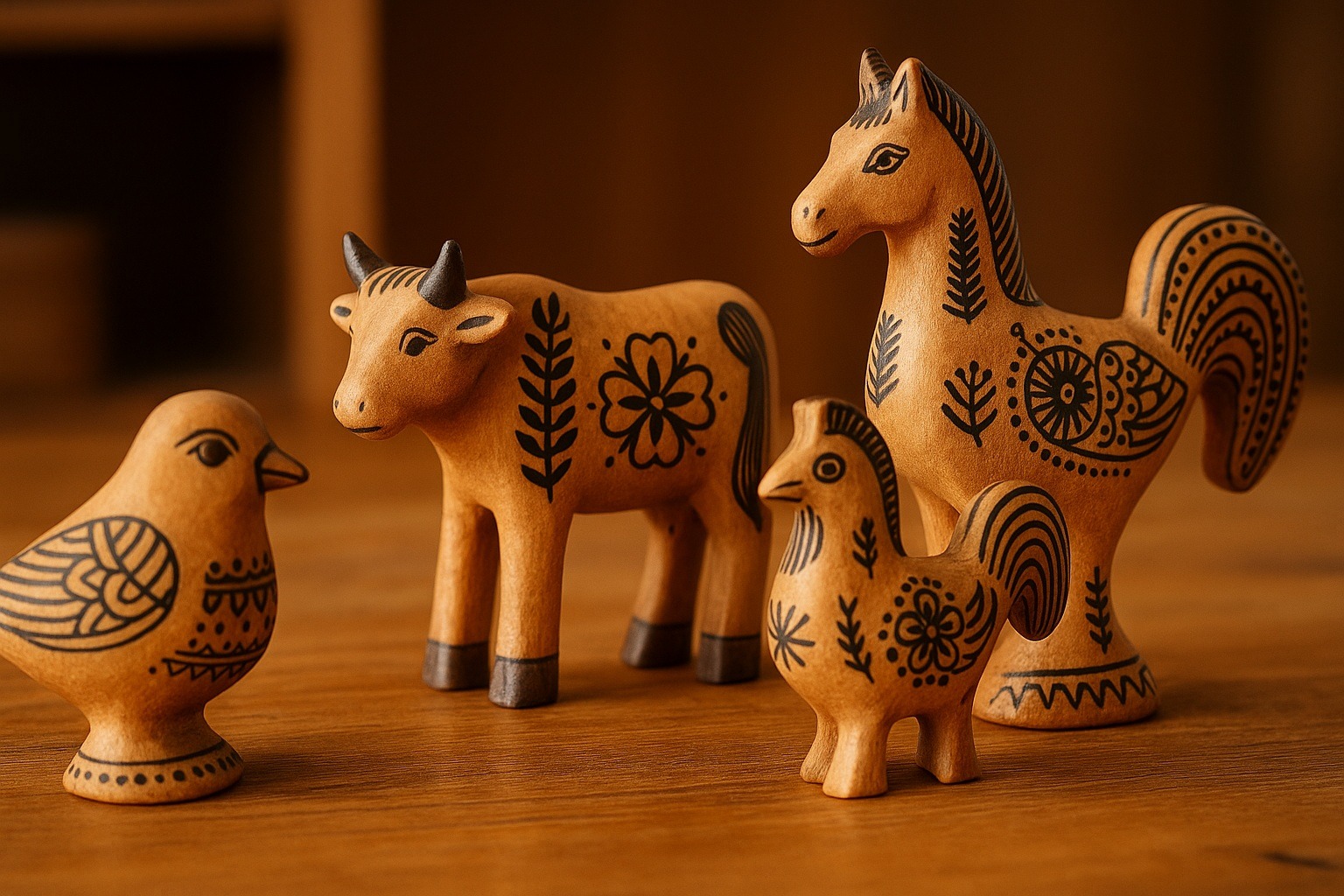
Traditional handmade decorative animals in Albania are an important part of the people’s artistic and cultural heritage. These small animal figurines are typically made from materials such as wood, ceramic, or metal and are hand-shaped by local artisans. Animal figures are used in Albanian culture as symbols believed to bring good luck and are made in many different forms—such as birds, cows, sheep, horses, and lions. Each figurine is detailed with fine craftsmanship and adorned with traditional Albanian patterns. These figures are commonly used as decorative items in Albanian homes but are also given as gifts on special occasions.
Decorative animals carry cultural significance in Albania and also possess artistic value. These figurines symbolize the local people’s way of life, their connection with nature, and the important elements of their daily existence. The designs of the decorative animals reflect regional variations and local beliefs. For example, bird figures often symbolize freedom and peace, while horse figures represent strength and resilience. These figurines are considered valuable souvenirs as both a tribute to Albania’s cultural heritage and elegant examples of traditional craftsmanship.
25. Kökten Leather Boots: Traditional Albanian boots.
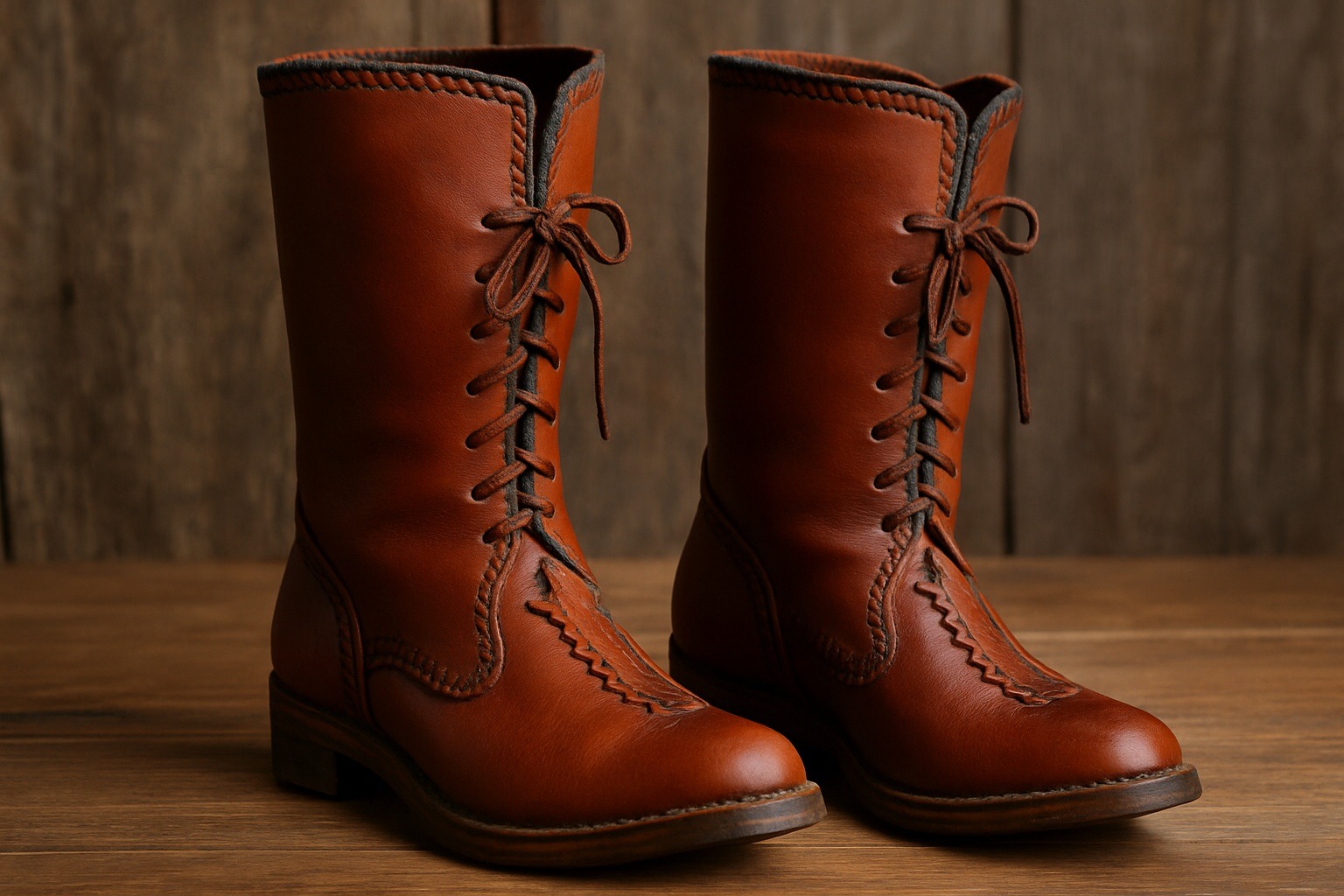 Kökten leather boots hold an important place in Albania’s traditional clothing culture and are handcrafted items. These boots are typically made from sheep or cow leather and are shaped using traditional techniques. In the design of Albanian boots, great care is taken both functionally and aesthetically. The leather is processed to be durable and flexible, allowing the boots to be worn for a long time. The leather used in their production is natural and gains character over time with use. Traditional Albanian boots are worn not only for daily use but also during special events and cultural celebrations.
Kökten leather boots hold an important place in Albania’s traditional clothing culture and are handcrafted items. These boots are typically made from sheep or cow leather and are shaped using traditional techniques. In the design of Albanian boots, great care is taken both functionally and aesthetically. The leather is processed to be durable and flexible, allowing the boots to be worn for a long time. The leather used in their production is natural and gains character over time with use. Traditional Albanian boots are worn not only for daily use but also during special events and cultural celebrations.Kökten leather boots are especially symbolic clothing items reflecting the traditional lifestyle in rural areas of Albania. The boots are notable for their wide soles and finely crafted patterns. Albanian boots, made with kökten leather craftsmanship, feature elegant and durable designs and also symbolize the region’s cultural heritage. Each pair reflects the years of experience and skill of the artisans who make them. Albanian kökten leather boots stand out as meaningful gifts or traditional clothing items for both locals and tourists.
26. Lamb Wool Products: Handmade wool items and gloves.
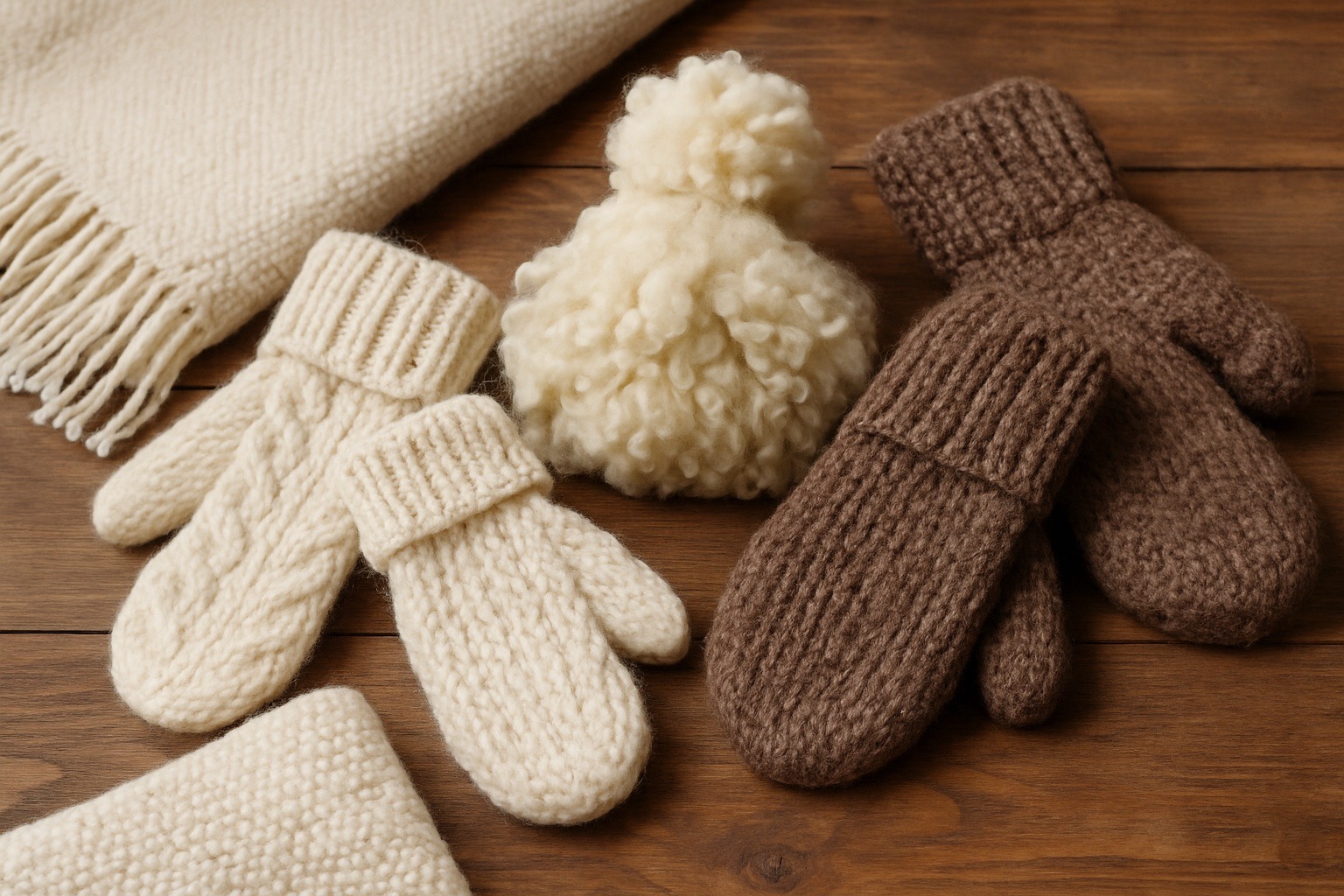
Albania is renowned for its traditional handicrafts, and products made from lamb’s wool are among the most striking examples of this craftsmanship. Lamb wool is known for its warmth and soft texture and is used in various handmade textile products in rural areas of Albania. The wool is processed using natural materials and is commonly found in handwoven items such as carpets, blankets, shawls, and gloves. Albanian wool products are adorned with traditional motifs, often inspired by nature and the culture of the Albanian people. These lamb wool items hold great importance both functionally and decoratively.
Handmade products made from lamb wool are used in Albania’s cold winter months to provide warmth while also offering elegant designs. These items are popular as accessories and clothing such as gloves, scarves, and socks. Each piece is carefully crafted by artisans and reflects Albanian traditions. Products made from lamb’s wool are a part of daily life for the local people and are considered valuable souvenirs for tourists looking for something unique to Albania. These handmade woolen items play a significant role in promoting Albania’s cultural richness and traditional arts.
27. Albanian Ceramic Plates: Traditional ceramic plates and serving items.
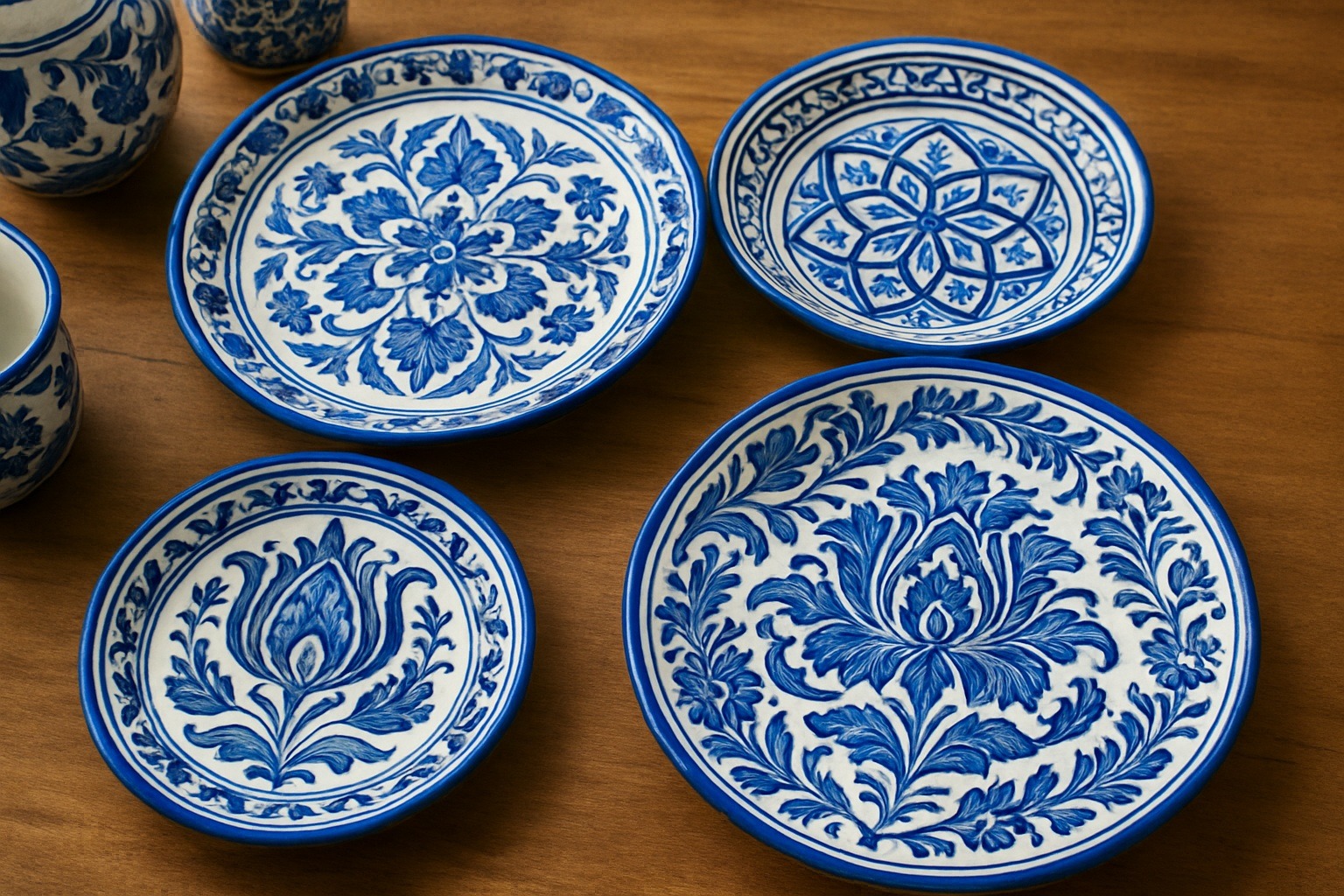
Albanian ceramic plates are among the most elegant examples of the country’s traditional handicrafts and are considered important items that reflect the cultural heritage of Albanian cuisine. Typically handmade, these plates are adorned with fine craftsmanship and original designs. Ceramic plates are especially decorated with traditional patterns in blue and white and often feature geometric shapes, nature-inspired figures, or folkloric motifs. These plates are used in the presentation of Albanian dishes and hold both aesthetic and functional value for the table. Beyond serving food, Albanian ceramic plates also serve as decorative elements in homes.
Albanian ceramic plates are carefully crafted by local artisans and each piece is a work of art that preserves the cultural heritage of the Albanian people. These plates are commonly used to enhance the visual appeal and presentation of food, but they are also highly sought after as souvenirs. Each plate, with its unique design and traditional techniques, becomes a significant symbol representing Albanian culture. These plates are among the most striking elements on the table for both everyday use and special occasions, offering visitors a glimpse into the elegance of Albanian cuisine.
28. Albanian Carpets and Kilims: Traditional Albanian rugs and kilims with various patterns.

Albanian carpets and kilims are among the finest examples of the country’s rich cultural heritage and traditional craftsmanship. These carpets are typically made from local wool and woven using traditional techniques. Patterns unique to Albanian carpets often feature geometric shapes, natural elements, and figurative designs. Each carpet is decorated with special motifs that reflect the cultural identity and history of the region, and every piece is handcrafted by local artisans. Albanian carpets serve both aesthetic and functional purposes and play an important role in home decoration. Traditionally, Albanian carpets are considered valuable family heirlooms passed down from generation to generation.
Albanian kilims, on the other hand, are more finely woven than carpets and are often used as wall decorations or covers. The designs in kilims are equally unique and are typically created using vibrant colors such as red, blue, yellow, and white. Albanian kilims are not only decorative but also functional items used in homes. They occupy a prominent place in the interior decoration of traditional Albanian houses and are produced in various sizes. Albanian carpets and kilims reflect the culture of the local people and are among the most valuable souvenir options for tourists. Recognized both in Albania and internationally, these carpets symbolize traditional craftsmanship and aesthetic values.
29. Scarves Woven on Albanian Looms: Traditional handwoven scarves.
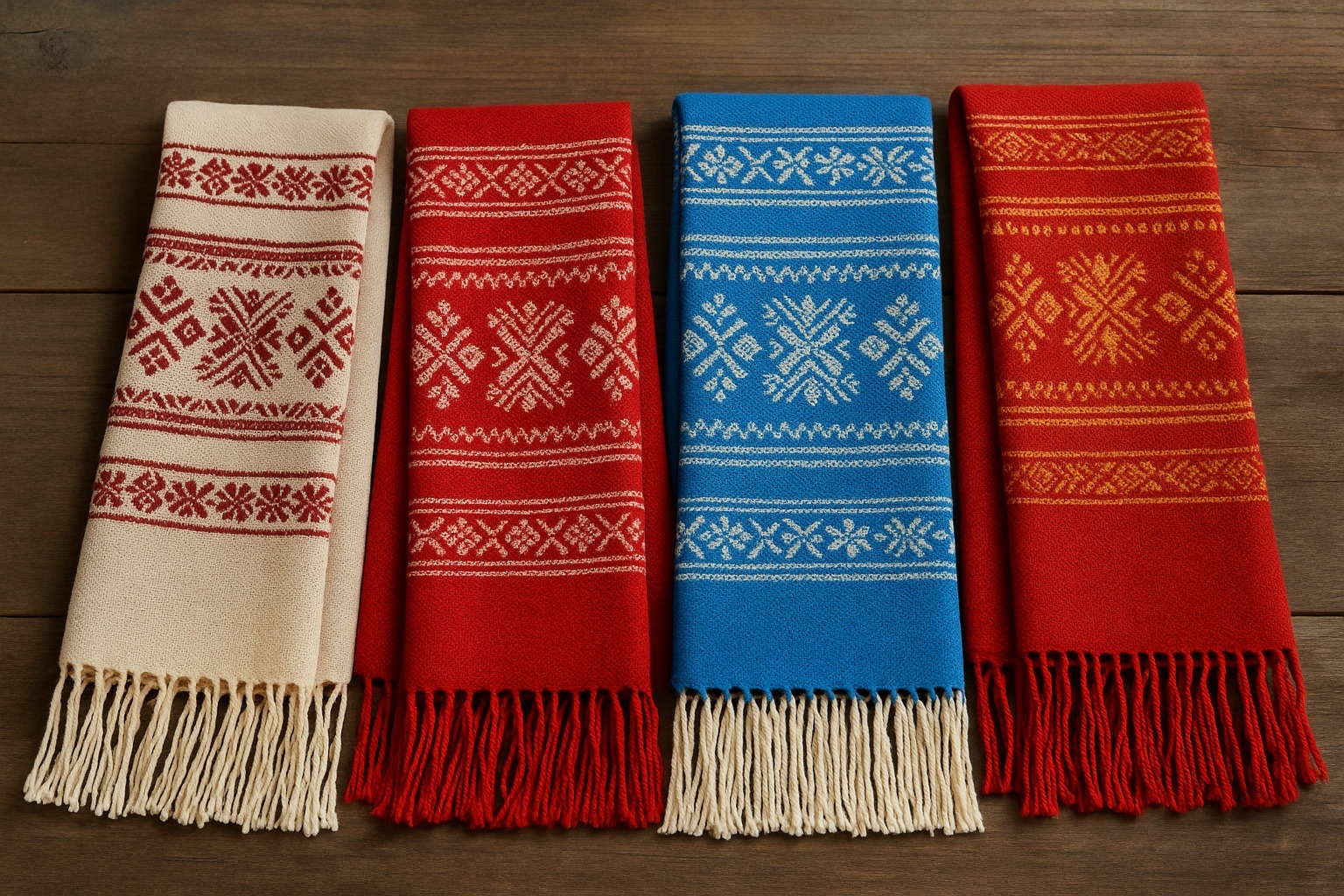
Scarves woven on Albanian looms are a refined example of traditional Albanian handicrafts. These scarves are typically woven from locally produced natural threads, and each one is made by hand. The weaving techniques used are based on centuries-old traditions, and these handwoven scarves are known for their fine details and harmonious color combinations. The most distinctive feature of Albanian scarves is the use of traditional motifs and patterns. Floral designs, geometric shapes, and nature-inspired figures are frequently found on these scarves. They are regarded as an art form that reflects the rich culture and history of Albania.
Albanian scarves carry not only aesthetic value but also cultural significance. These scarves are often worn on special occasions and with traditional clothing. For women, the scarf is an important element of traditional attire and a cultural symbol in Albania. Handwoven scarves are used in daily life by the Albanian people and are also highly appreciated as gifts. With both elegance and traditional meaning, Albanian scarves are among the most meaningful souvenirs that tourists can bring from Albania. These scarves help preserve Albanian craftsmanship and culture, serving as a tribute to the history of the Albanian people.
30. Ancient Albanian Jewelry Items: Historical jewelry and accessories.
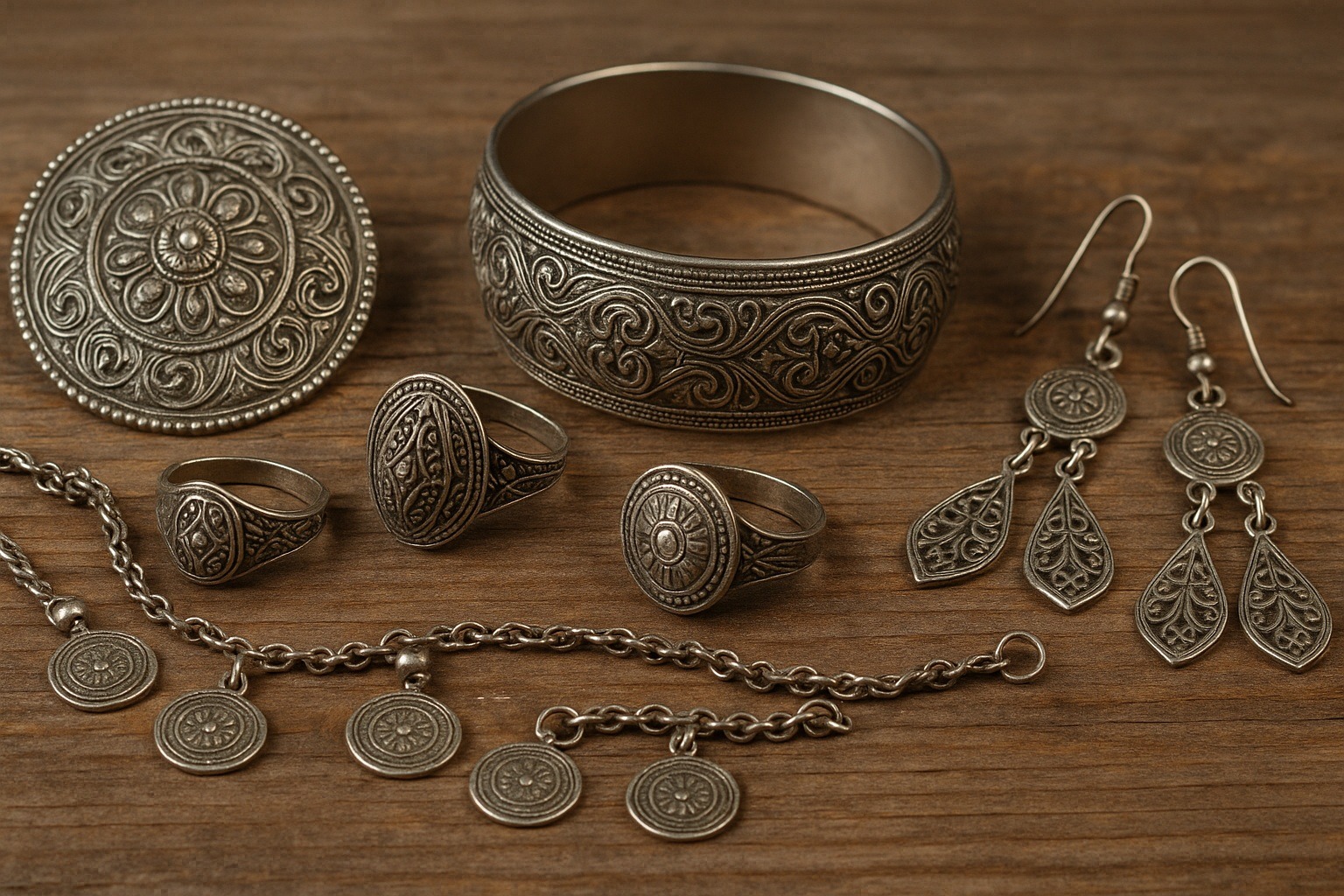
Ancient Albanian jewelry is among the most significant items reflecting Albania’s rich history and cultural heritage. These pieces are crafted using traditional Albanian techniques, with designs and methods that date back centuries. Typically made from materials such as silver, gold, and precious stones, these jewelry items feature aesthetic elements that reflect the Albanian people’s socio-economic status, beliefs, and cultural symbols. Common motifs found in ancient Albanian jewelry include geometric patterns, animal figures, and natural elements. These pieces, carrying the marks of the past, are elegant and meaningful souvenirs with both historical and cultural value.
Ancient Albanian jewelry items are designed to complement traditional clothing and are often worn during weddings, religious celebrations, or special occasions. Jewelry from different regions of Albania varies according to local traditions, but all share a common foundation of rich craftsmanship and design. These items are not merely accessories but also cultural symbols and values passed down by the Albanian people from generation to generation. Today, these ancient pieces attract great interest among collectors and history enthusiasts and are considered meaningful souvenirs unique to Albania. With their aesthetic beauty and historical significance, these jewelry pieces play an important role in preserving Albanian craftsmanship and culture.
